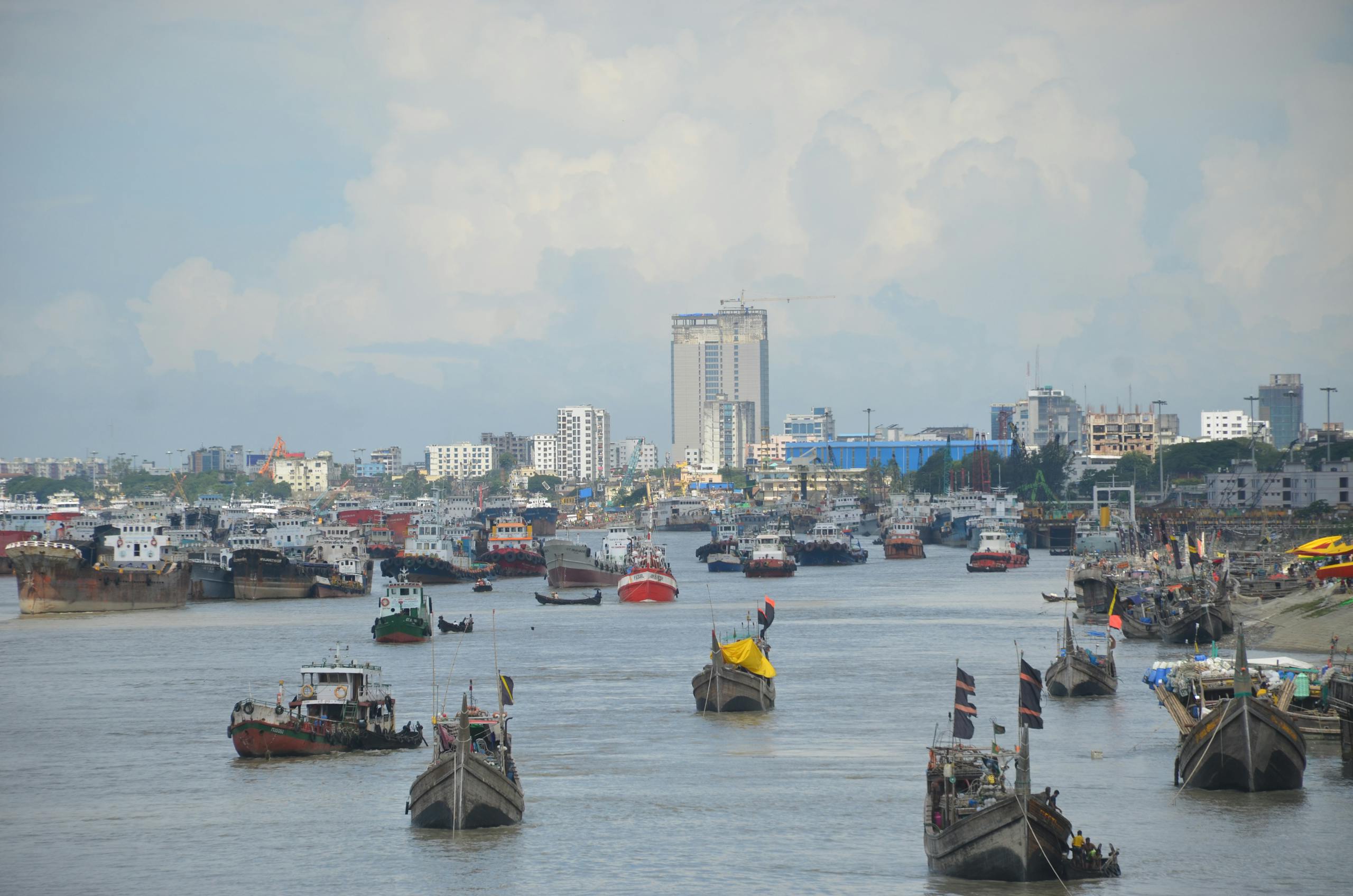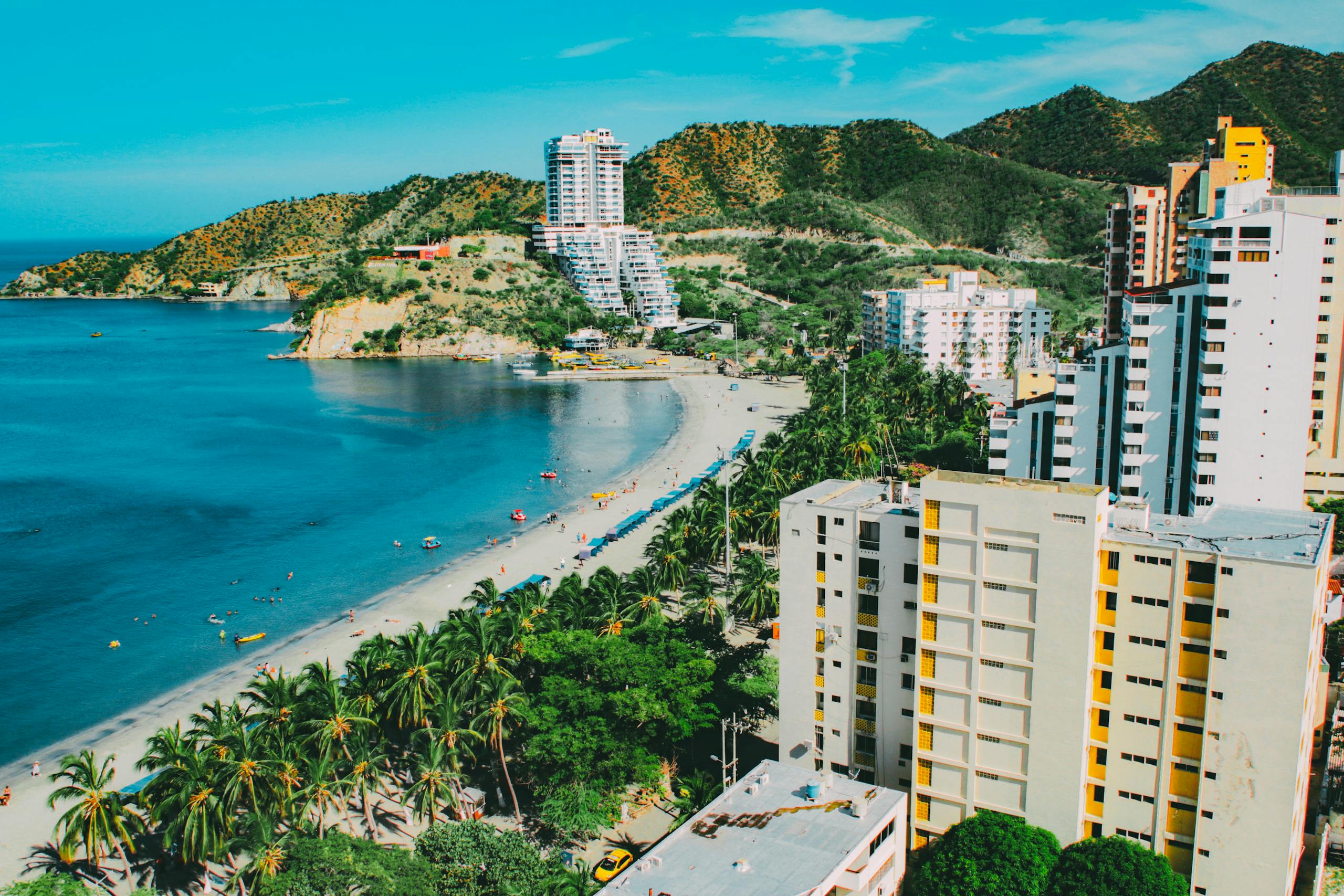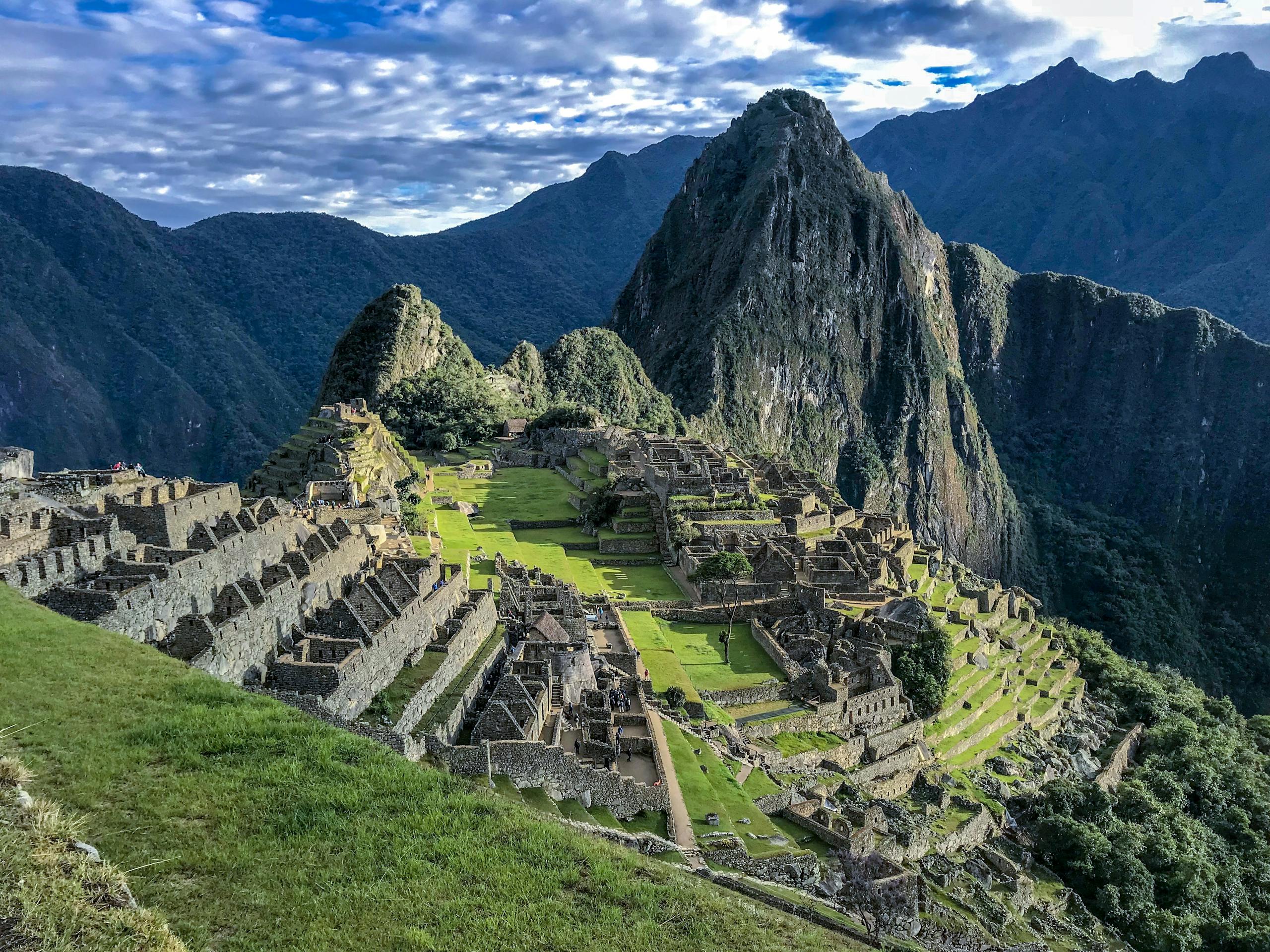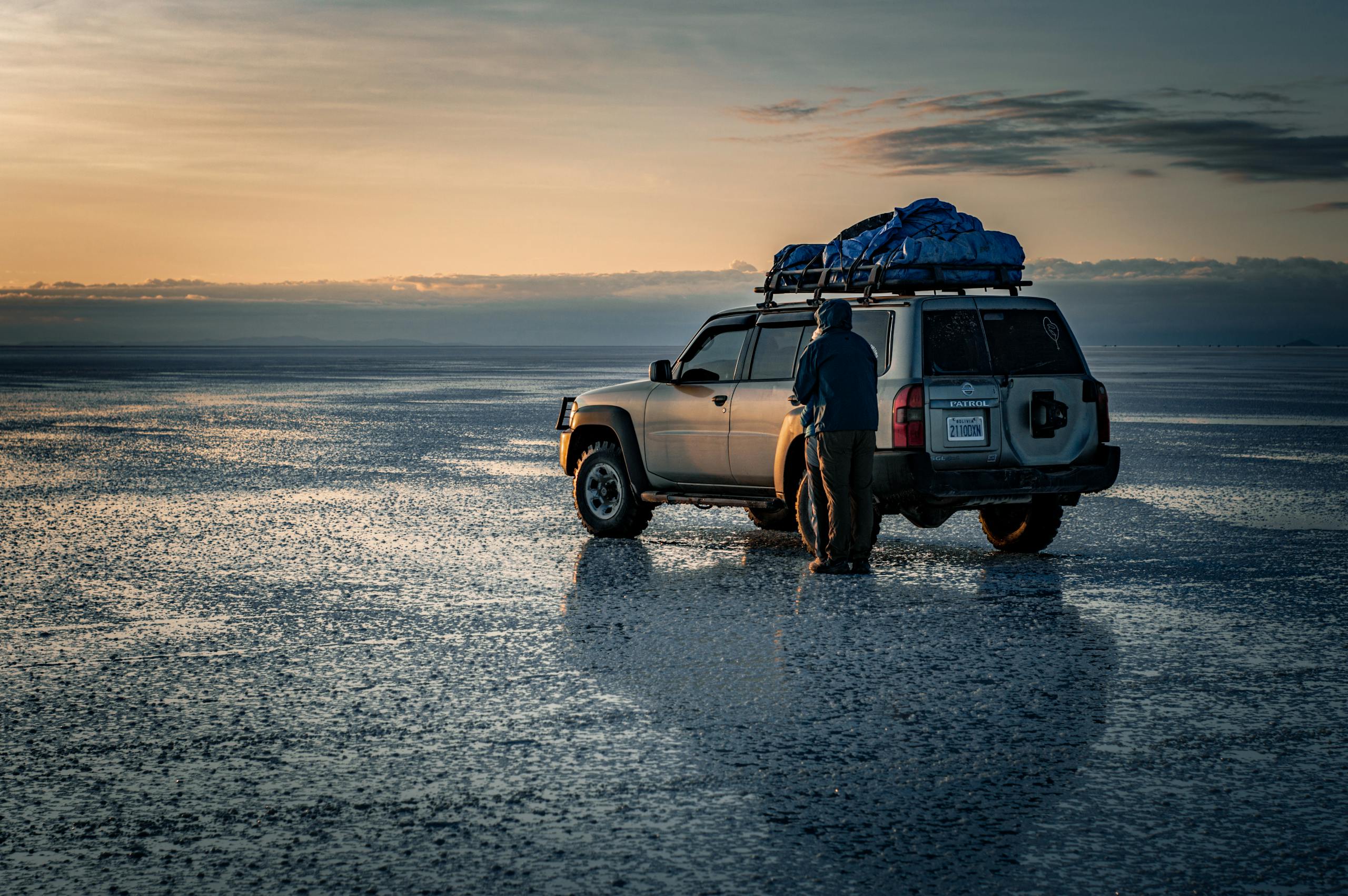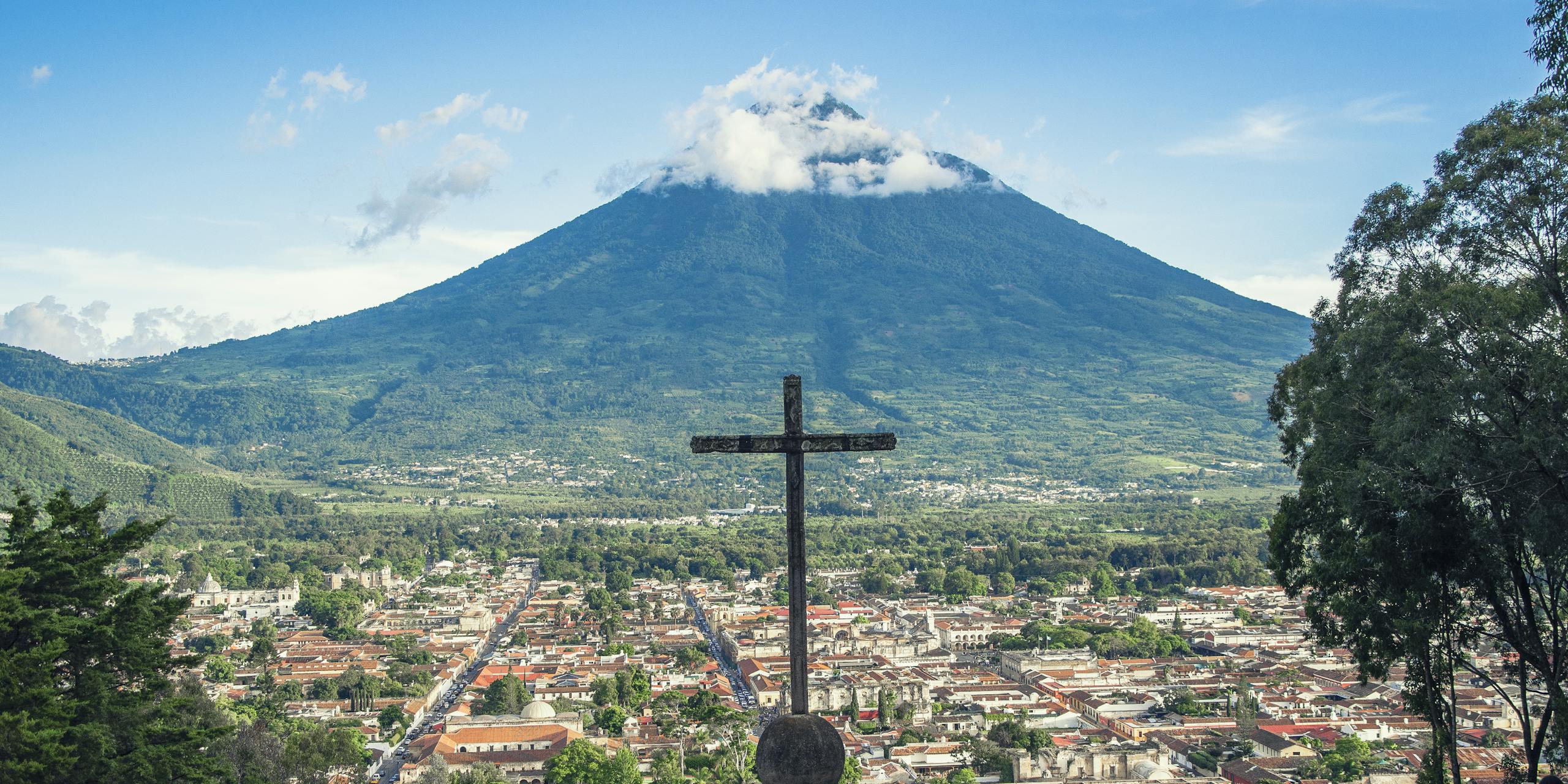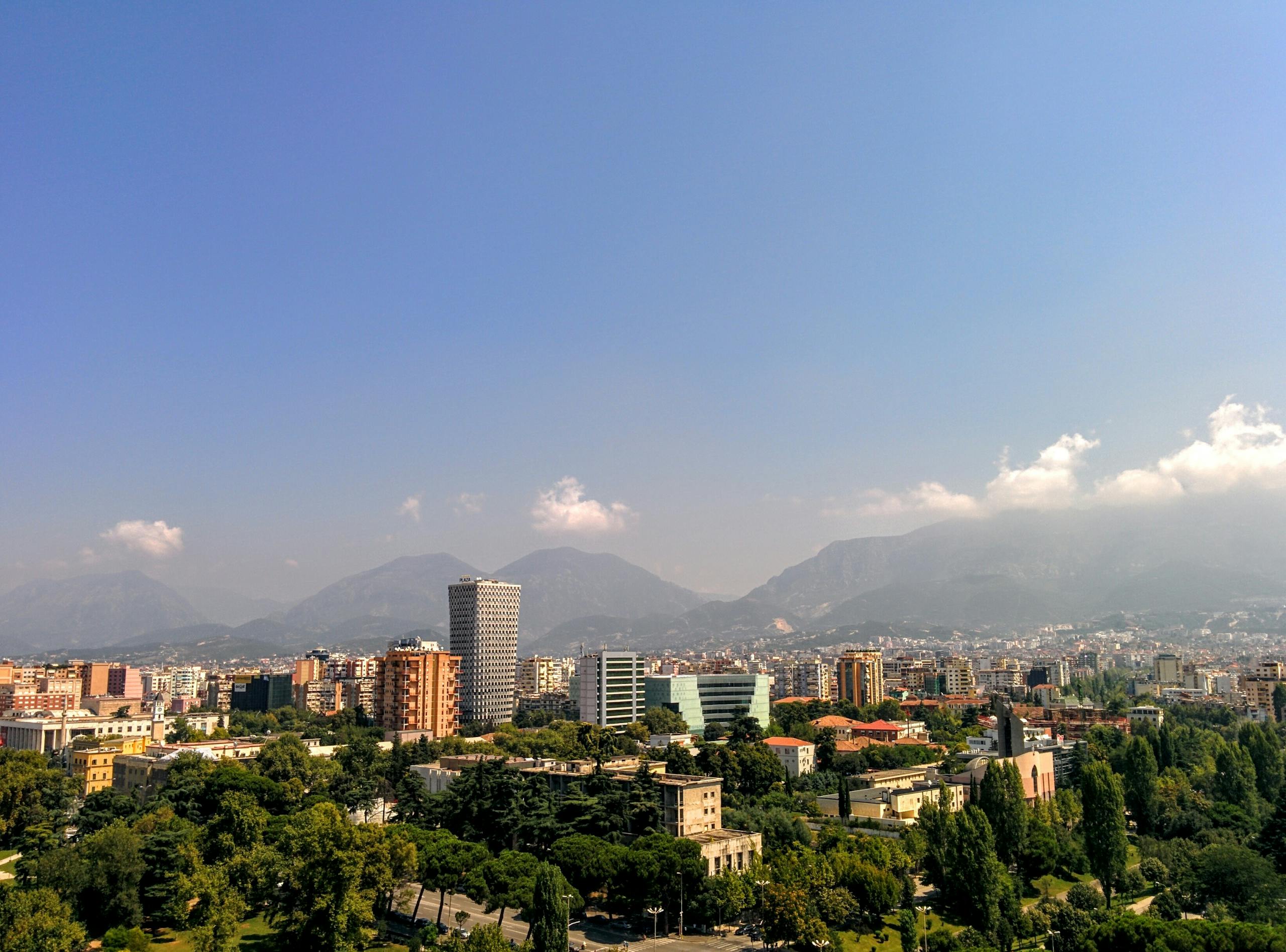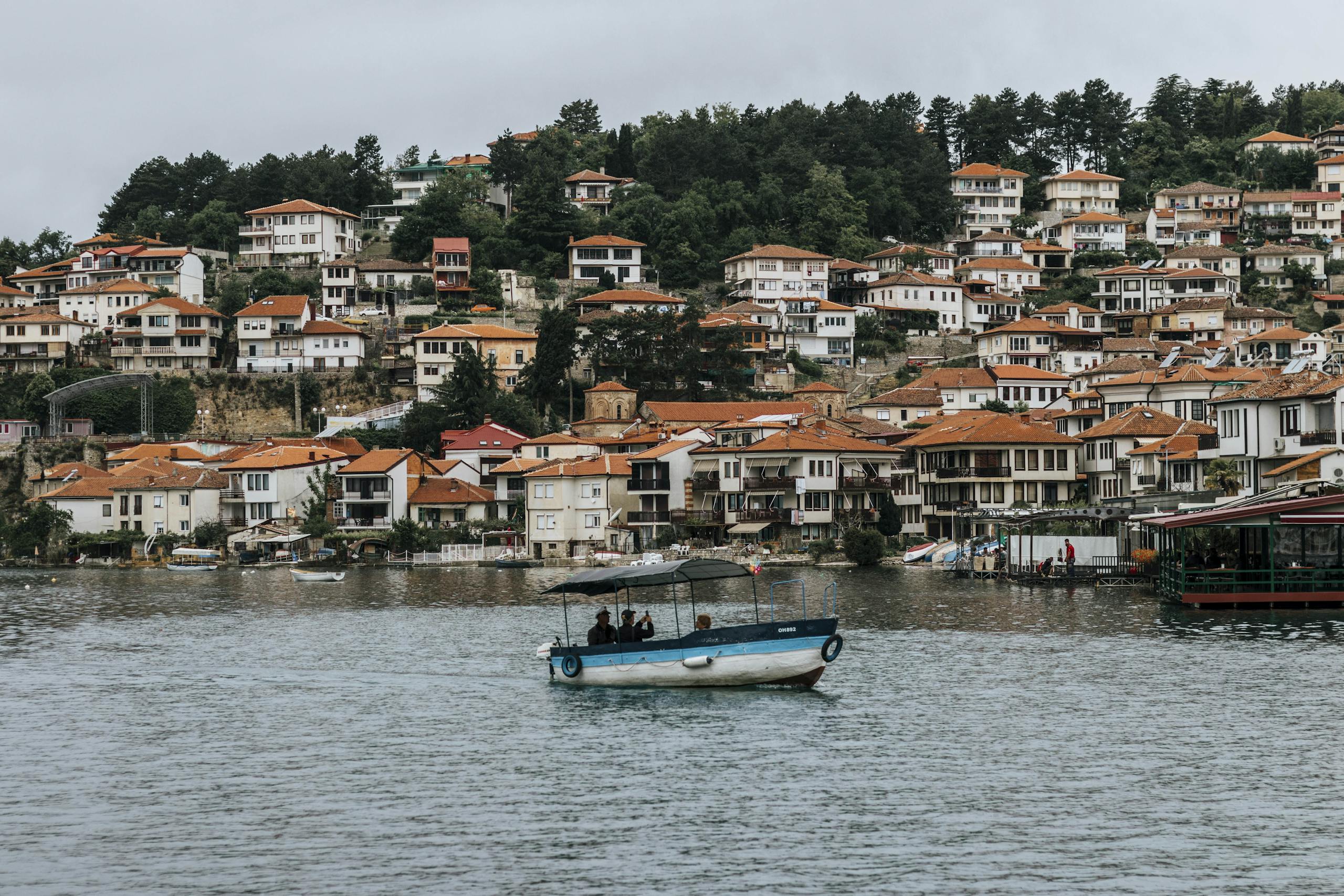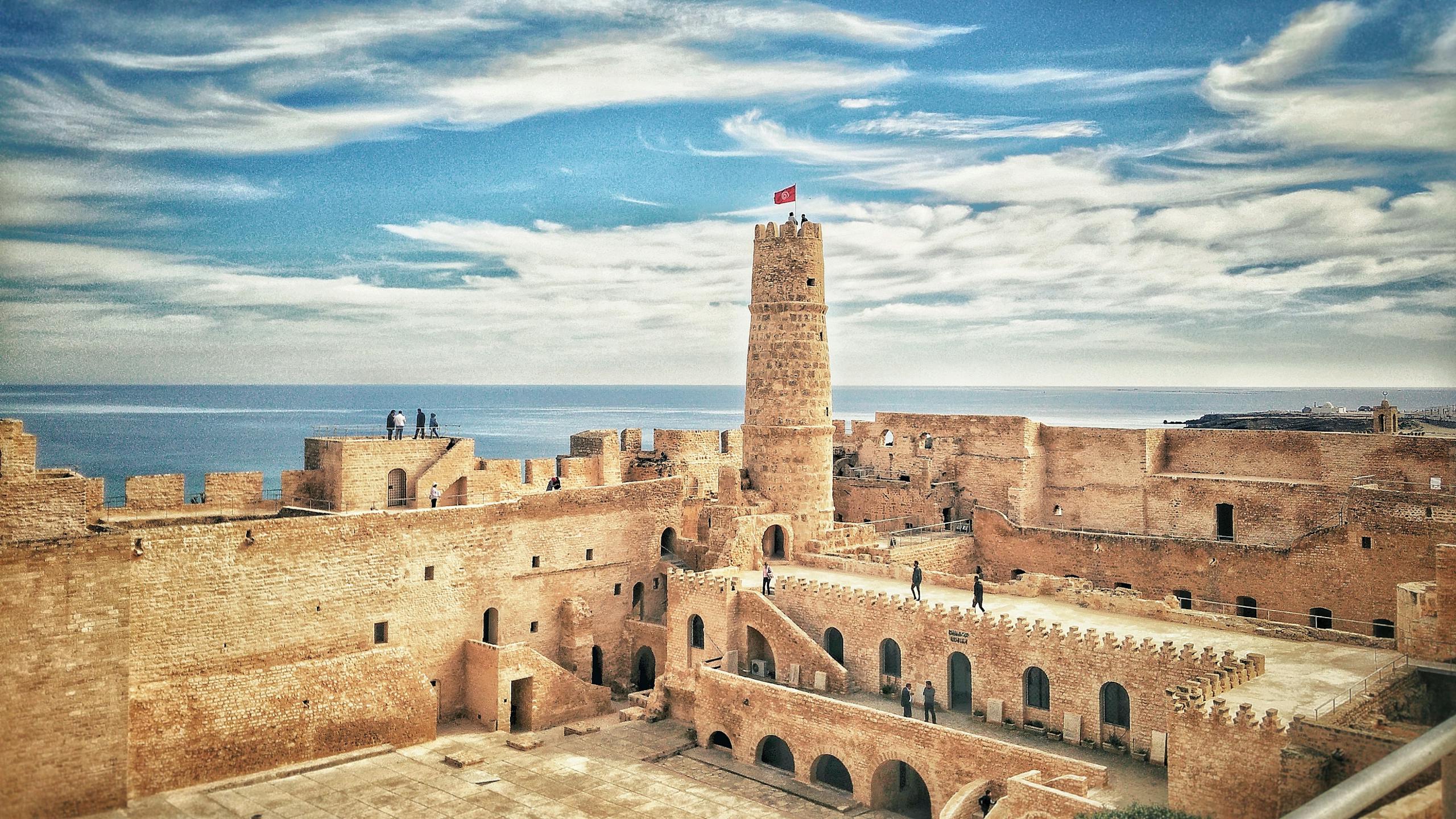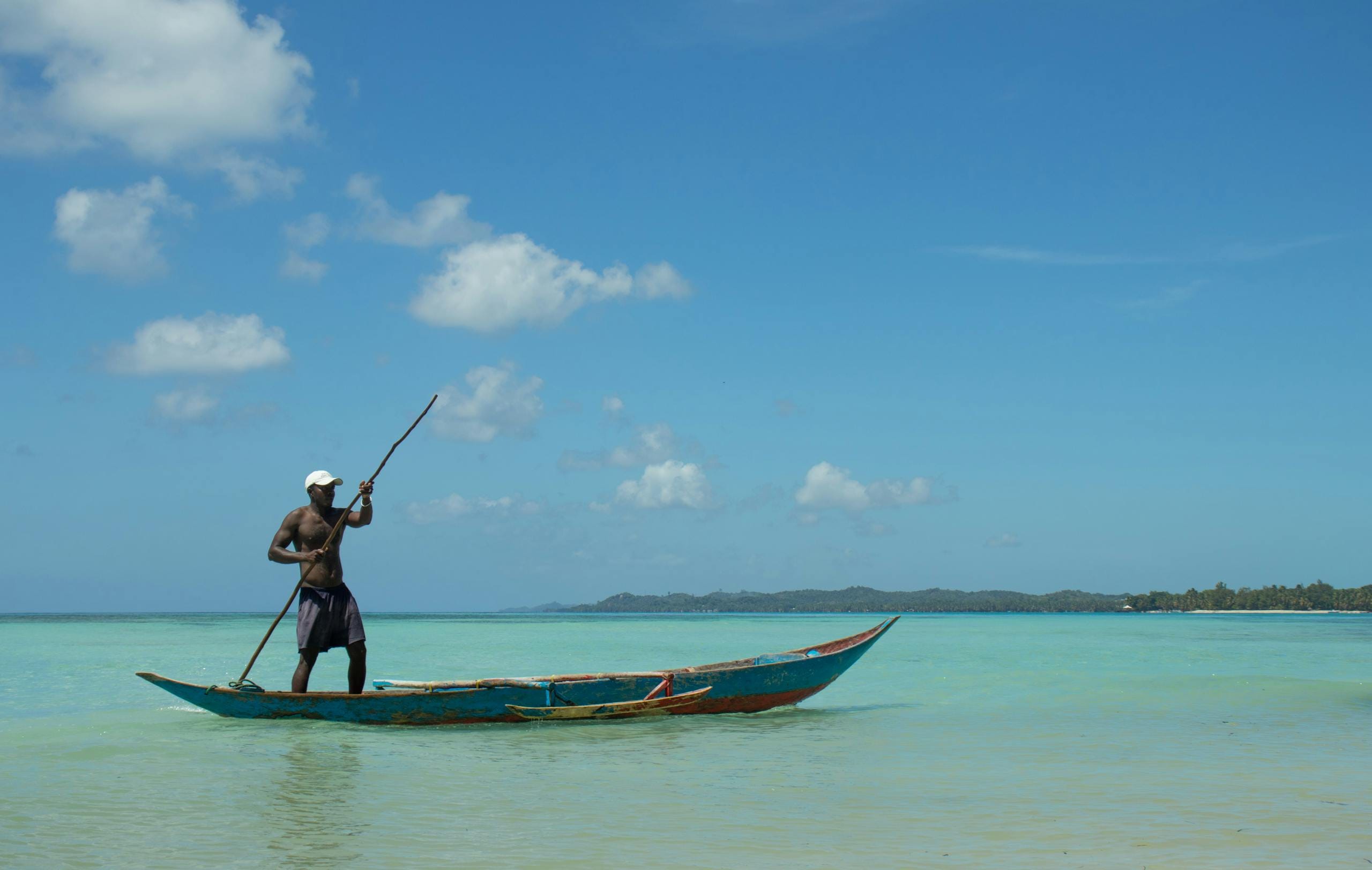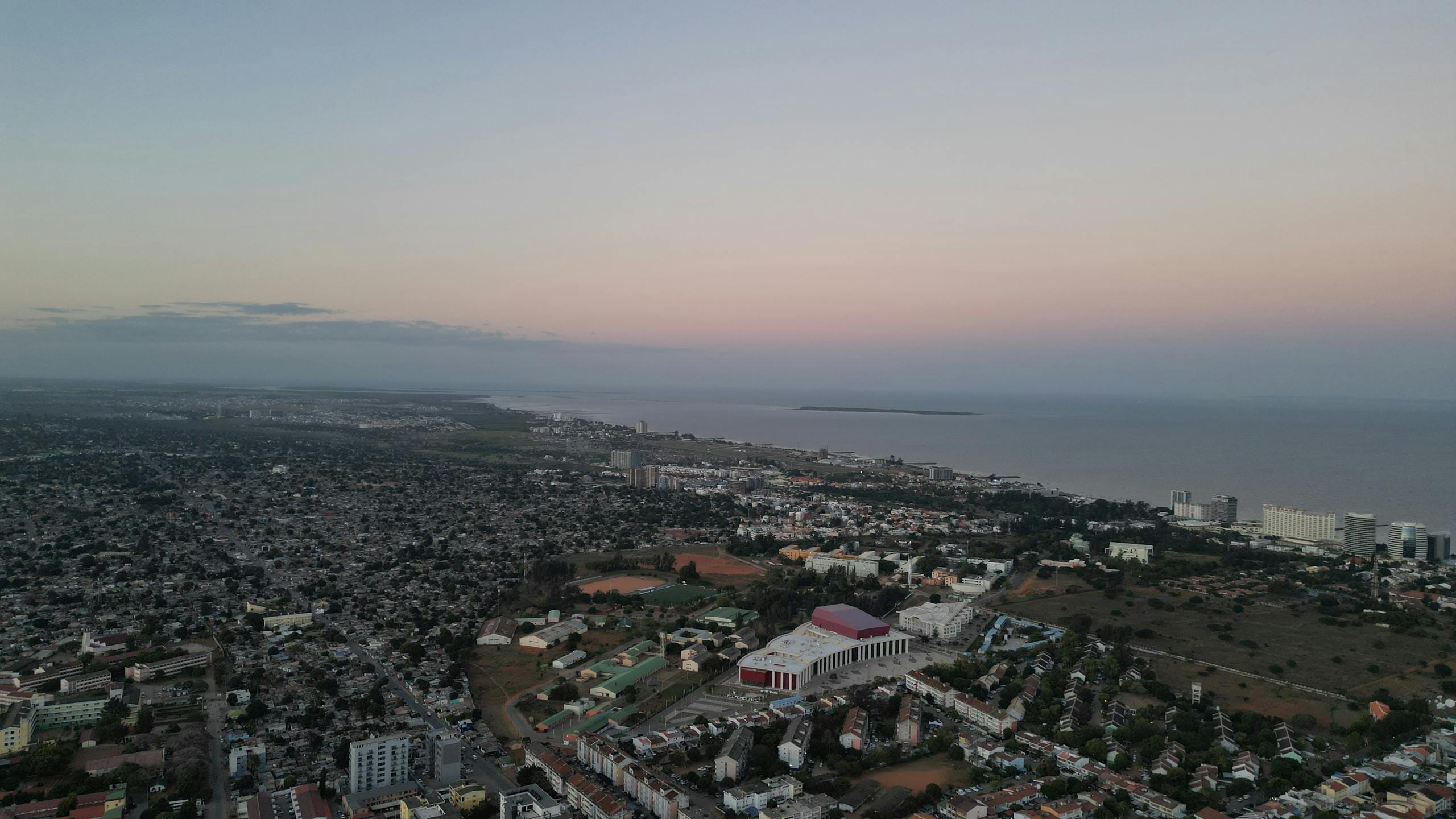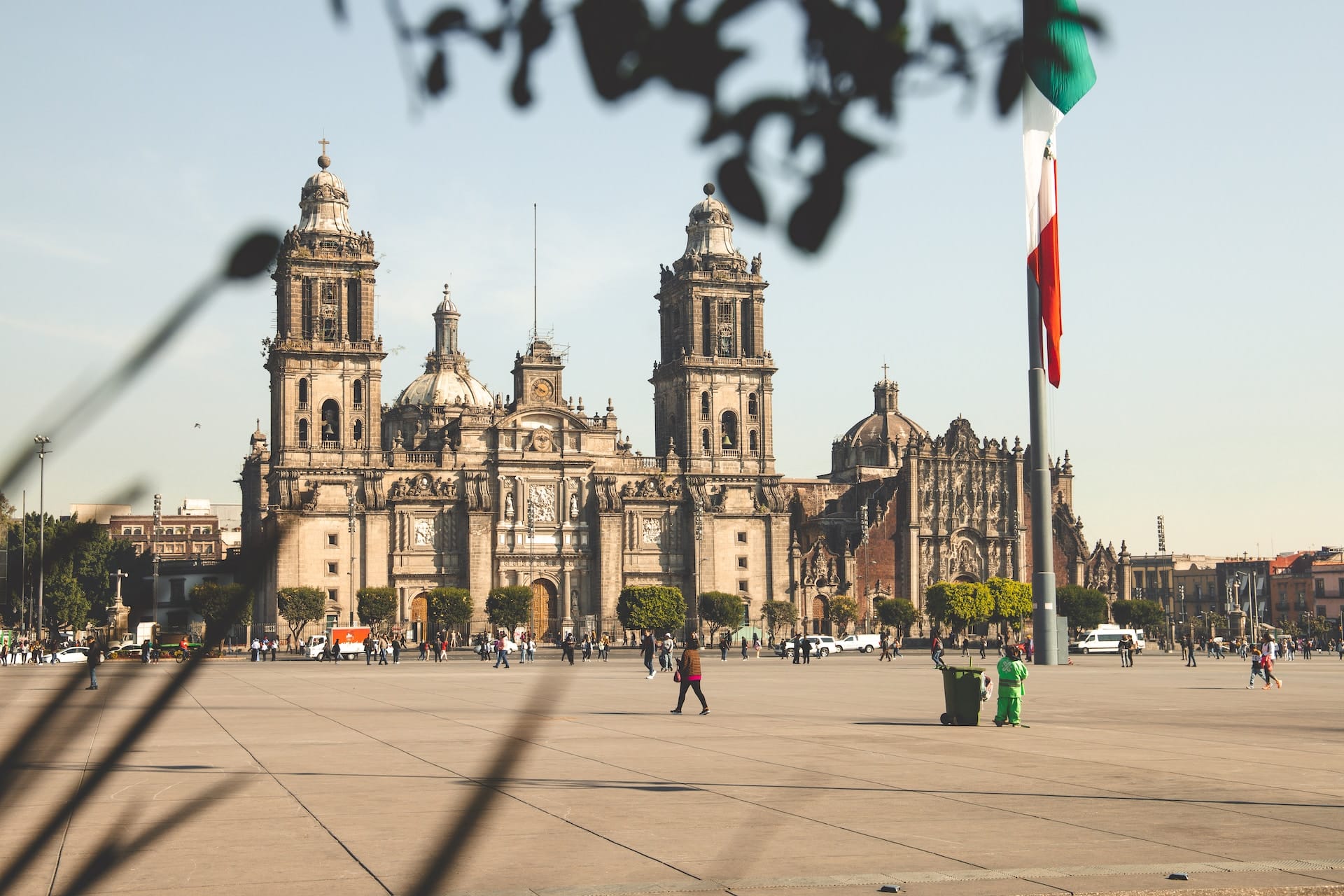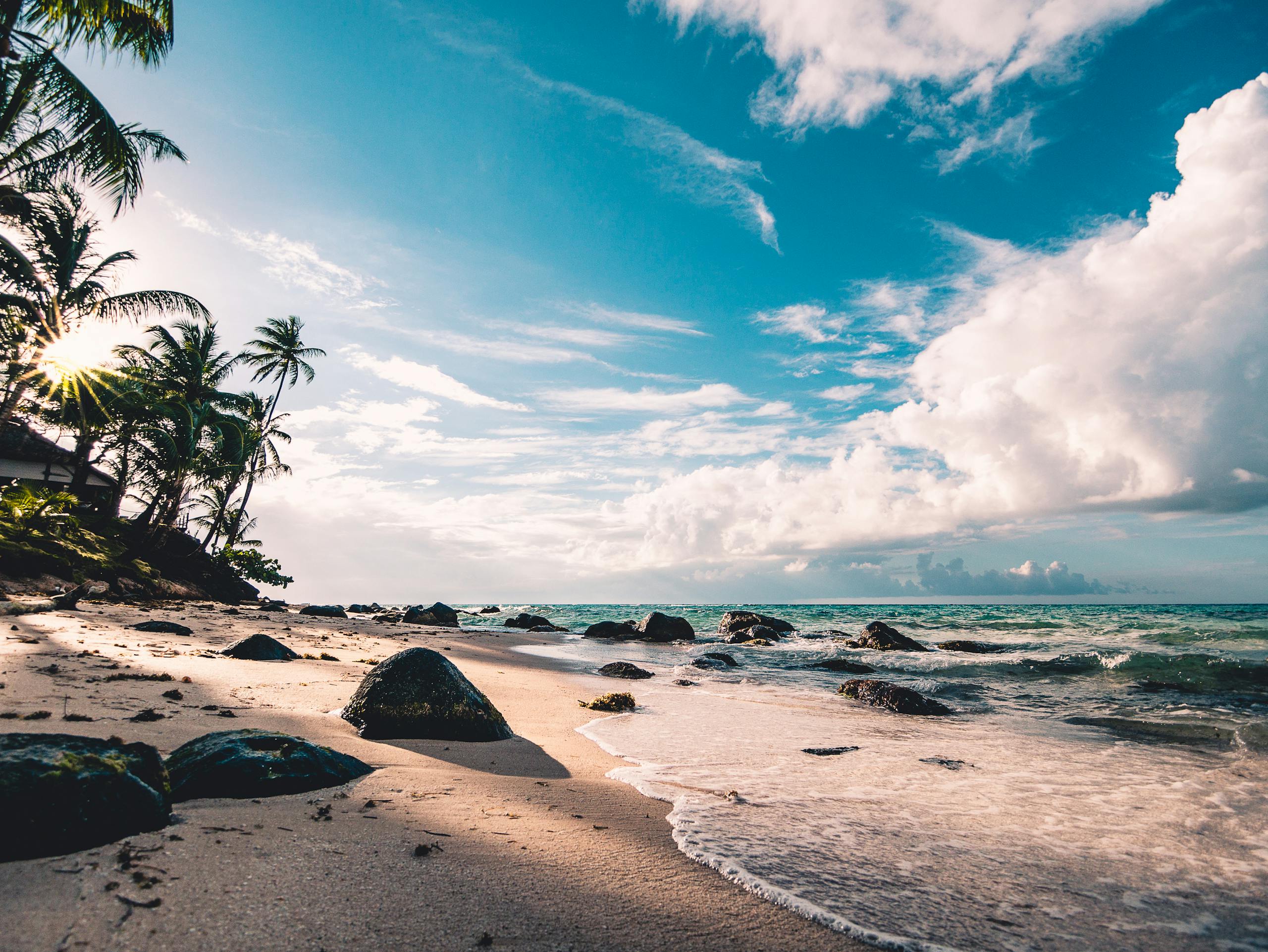Blog » Travel Guides » Best Cheap Places t...
Best Cheap Places to Go on Vacation in 2025 — Budget Destinations, Sample Budgets & Money-Saving Hacks
Practical, region-by-region guide to the best cheap places to visit in 2025, with per-day sample budgets, traveler‑type budgets (solo, couple, family, teen, digital nomad), sample 3/5/7‑day itineraries, transport and lodging cost breakdowns, and 20+ updated money‑saving hacks to stretch your travel dollars.
Key Takeaways
- Plan budgets using three core inputs: per-day budgets, traveler profiles, and seasonality, to estimate costs and compare destinations.
- Seasonality can swing costs, with 30–60% higher prices in high season and 10–40% discounts off-season, depending on destination.
- Use the provided ready-to-use templates and printable budgets to plan and compare quickly.
- Maximize value by sharing lodging (when possible), taking advantage of long-stay discounts, and cooking meals to cut lodging and food costs.
- Always check visa rules, taxes and final prices in local currency and verify cancellation terms and baggage fees to avoid surprises.
Cheap places to go on vacation don’t have to break your budget. This friendly guide shows you how to pick destinations that fit a real budget while still delivering food, culture, and fun.
We break costs into clear parts and show you the per-day budgets, traveler profiles, and seasonality tips that change prices. From Southeast Asia to Europe, you’ll see sample budgets and easy money-saving hacks to cut lodging, food and transport costs. Look for ready-to-use templates to plan and compare quickly.
Whether you travel solo, with a partner, or with family, this guide helps you pick the right region, estimate costs, and book smarter.
It highlights the best value destinations for 2025 and gives you step-by-step ideas to turn numbers into a real trip, without surprises.
How to Use This Guide and Our Budget Methodology

What ‘cheap’ means in 2025: data sources and assumptions
When we say “cheap places to go on vacation” in 2025 we mean destinations where a practical, comfort-focused budget gets you safe lodging, local food, basic transport and a few paid activities without luxury frills. For most regions that maps to simple per-day ranges we use across the article:
- Backpacker/basics: about $25–$50 per day in very low-cost countries (many parts of Southeast Asia, South Asia, parts of Central America)⁽²⁾.
- Budget traveler: about $50–$100 per day in many affordable countries where you want a private room and modest restaurants⁽¹⁾.
- Value mid-range: about $100–$150 per day for cheaper parts of Europe, North America off-season, or pricier islands when you want more comfort⁽³⁾.
Those ranges are not guesses. We triangulate from three inputs: crowd-sourced cost databases, established travel guide research and recent field reports from budget travel authors and contributors⁽²⁾⁽¹⁾⁽³⁾.
We also factor in 2024–25 inflation and travel demand increases, so expect many per-day figures to be modestly higher than pre‑pandemic guides⁽¹⁾.
Traveler types covered (solo, couple, family, teen/student, digital nomad)
Budgets change a lot by who’s traveling. For clear comparisons we prepared separate profiles and assumptions for each type below and use them throughout the region guides.
- Solo traveler: single occupancy, usually hostels or single private rooms, public transport, eating at local restaurants or street food; no split-room savings (used for backpacker and low-cost examples)⁽¹⁾.
- Couple: shared double rooms or small apartments; many costs split (accommodation, taxis) so per-person cost is lower than solo sleeping alone⁽¹⁾.
- Family (2 adults + 1–2 kids): assumes family rooms or small apartments, occasional paid kid activities, and some paid transfers; we add child-related costs like extra entrance fees and larger meals when calculating totals⁽³⁾.
- Teen / student: very low-cost choices, often hostels, budget buses, student discounts where available; we assume high price sensitivity and include safety notes for late-night travel and low-cost options⁽²⁾.
- Digital nomad / long‑stay: monthly rentals, coworking day passes or monthly passes, local SIM/data plans, and occasional short-term travel costs; long stays cut per-day lodging costs substantially in our monthly examples⁽¹⁾.
Each per-destination snapshot explains which traveler profile the sample budgets represent so you can pick the one closest to your trip style.
How per-day and total trip budgets are calculated
We build budgets from simple, repeatable line items so numbers are easy to adapt to your plans. The base per-day formula we use is:
Per-day budget = Accommodation + Food + Local transport + Activities/entrance fees + Incidentals (phone, tips, minor supplies)⁽²⁾.
Key points about the method:
- Accommodation: average of low-cost private rooms or hostel beds for solo/backpacker; small double or apartment rate for couples and families. We use nightly rates from guide reports and price databases, then adjust for peak/shoulder season⁽¹⁾⁽²⁾.
- Food: mix of street/local restaurants plus occasional sit-down meal. Family budgets scale food by number of people; student budgets assume mostly street or market meals⁽³⁾.
- Transport: local bus, metro or occasional low-cost taxi. Intercity legs are estimated separately and added to total trip cost rather than every day⁽²⁾.
- Activities & extras: realistic one or two paid attractions per day (museum, entry, short tour) plus occasional extras like laundry or minor gear⁽¹⁾.
- Incidentals & buffer: we add a 10–15% buffer for small fees, tips, and rounding so travelers are not surprised in the field⁽³⁾.
To get a total trip budget we multiply the per-day budget by the number of days, then add fixed items: international flights, travel insurance, visas and major intercity transport legs. Example quick formula:
Total trip = (Per-day × Days) + Roundtrip flight + Insurance + Visa + Big intercity tickets⁽¹⁾.
| Category | Solo/budget (sample) | Family (2+2 sample) |
|---|---|---|
| Accommodation | $10–$30 | $40–$90 |
| Food | $8–$20 | $25–$50 |
| Transport + Activities | $7–$25 | $15–$50 |
| Daily buffer | 10–15% | 10–15% |
Currency, seasonality and price-checking notes
Small changes in currency and season can make a big budget difference. Here’s how we handle them and what you should check before you book.
- Use local currency as the baseline. Price-check in the destination currency, then convert using a recent rate. That avoids confusing dynamic pricing shown in foreign-card view or hotel sites⁽²⁾.
- Watch seasonal multipliers. We increase per-night accommodation and activity costs by 30–60% in high season and drop them by 10–40% off-season depending on the destination’s tourism cycle⁽³⁾.
- Check taxes and tourist fees. Some places add city taxes, entry fees, or mandatory tourism levies at checkout. We include typical local taxes in the snapshot notes but always recommend checking the property listing before booking⁽¹⁾.
- Exchange rate tip: use a 30–90 day average or a real-time on-booking check. If you book weeks ahead, re-check rates before paying—large swings can change your trip cost meaningfully⁽²⁾.
- Price sources we use: crowd-sourced cost of living data, updated guidebook research and recent on-the-ground reports. Use official or large-traffic sites for bookings and verify final prices in local currency before purchase⁽¹⁾⁽²⁾⁽³⁾.
How to use this guide: pick the traveler profile that matches you, read the destination snapshot for the per-day sample that fits your style, then apply the seasonality multiplier and add flights/insurance to get your total trip cost. That simple, repeatable process makes it easy to compare cheap places to go on vacation and choose the best value for 2025.
- Nomadic Matt — How to Travel on a Budget
- Numbeo — Cost of Living
- Lonely Planet — Budget travel costs and tips
Best Cheap Places by Region (Sample per‑Day Budgets Included)

Southeast Asia: top picks and sample budgets
Top picks: Vietnam (Hanoi, Hoi An), Thailand (Chiang Mai, islands off-season), Cambodia (Siem Reap, Sihanoukville), Laos (Luang Prabang), and the Philippines (less-touristy islands). These countries deliver the best value for food, transport and low-cost stays⁽¹⁾.
Sample per-day budget: $20–$45 for most travelers. Budget backpackers can aim for $15–$25/day; comfy mid-range travelers will average $35–$55/day⁽¹⁾.
Where to save: Eat street food, sleep in guesthouses or hostels, use night buses and local ferries. Avoid private transfers and tourist traps near big landmarks to keep costs low⁽¹⁾.
Best time to go: Dry season (roughly November–April) for most mainland spots; travel to islands in their local shoulder season to save money and crowds⁽¹⁾.
- Example: Solo backpacker in Hanoi — hostel $8, street meals $6, local transport $3, activities $13 = $30/day⁽¹⁾.
South Asia & the Indian Subcontinent: budget hotspots and costs
Top picks: India (Rajasthan, Kerala, Goa off-season), Nepal (Kathmandu, trekking on a budget), Sri Lanka (coast and cultural triangle) and Bangladesh for deep value experiences⁽¹⁾.
Sample per-day budget: $15–$40. Very frugal travelers in India or Nepal can manage $10–$20/day; if you add guided treks or private drivers budget $35–$60/day⁽¹⁾.
Where to save: Use long-distance trains and local buses, stay in homestays, eat where locals eat, and book trekking permits and guides through local operators to avoid inflated tour prices⁽¹⁾.
Best time to go: India — October to March for most regions; Nepal — Oct–Nov and Mar–May for trekking; Sri Lanka — time your coast choice (south/west vs east) to match seasons⁽¹⁾.
Central & South America: affordable culture and nature escapes
Top picks: Colombia (Medellín, Cartagena outskirts), Peru (Lima, Cusco area if you avoid peak Inca Trail prices), Bolivia (La Paz, Uyuni), Ecuador and Guatemala for strong value and varied experiences⁽³⁾.
Sample per-day budget: $20–$45. Bolivia and parts of Ecuador can be at the lower end ($15–$25/day); tourist hubs like Cusco run higher during high season⁽³⁾.
Where to save: Use colectivos and long-distance buses, choose local markets for meals and book entrance/trek tickets in advance only when necessary to avoid premium rates⁽³⁾.
Best time to go: Dry season for highland activities (roughly April–September for Andes). Lowland and Amazon trips depend on access and rain; check local seasonality to avoid closures and extra costs⁽³⁾.
Europe’s budget gems: Eastern Europe and off-season Western Europe
Top picks: Bulgaria, Romania, Albania, the Baltics and off-season Portugal or Spain. These spots give European culture at far lower prices than Western capitals⁽¹⁾.
Sample per-day budget: $30–$60 in Eastern Europe. Albania and Bulgaria often fall closer to $25–$40/day; off-season Western Europe (late fall to early spring) can match those prices for short stays⁽¹⁾.
Where to save: Stay in guesthouses or small pensions, use regional buses and trains, cook some meals and book museums on discount days. Shoulder-season travel brings the biggest savings⁽¹⁾.
Best time to go: Spring and autumn for fewer crowds and lower prices. Winter can be cheap but expect shorter daylight and cold weather in many areas⁽¹⁾.
North Africa & Middle East: value-packed cultural trips
Top picks: Morocco (Marrakesh outskirts, Fes medina stays), Egypt (Cairo, Luxor with budget tours), and Tunisia. These regions mix low-cost food and transport with rich cultural sites⁽¹⁾.
Sample per-day budget: $25–$45. Morocco and Tunisia often sit around $25–$35/day; Egypt can be slightly higher if you include guided site tours or Nile trips⁽¹⁾.
Where to save: Use local buses, eat at market stalls, sleep in riads or family-run guesthouses, and prefer shared day tours rather than private guides⁽¹⁾.
Best time to go: Late autumn to early spring for milder weather and better value. Summer can be very hot and cheaper but less comfortable⁽¹⁾.
Sub-Saharan Africa & Indian Ocean: low-cost wildlife and coasts
Top picks: South Africa for the best budget infrastructure, Madagascar and Mozambique for cheaper coastal and wildlife options, and some Indian Ocean islands off-season⁽¹⁾.
Sample per-day budget: $30–$55. South Africa can be done around $35–$50/day with hostels and public transit; Madagascar and Mozambique often require slightly higher transport budgeting but offer lower daily costs for food and stays⁽¹⁾.
Where to save: Join shared safaris, stay in community-run lodges, and book regional flights well ahead if islands are on your list. National park fees are often the biggest single cost for wildlife trips⁽¹⁾.
Best time to go: Dry season for safaris (roughly May–October). For beaches consider shoulder months to avoid peak prices and cyclone season where relevant⁽¹⁾.
North America & Caribbean: low-cost options and Mexico highlights
Top picks: Mexico (Mexico City, Oaxaca, inland towns), Guatemala and Nicaragua for Central America, and avoid resort strips if you want true savings⁽³⁾.
Sample per-day budget: $25–$60. Mexico and parts of Central America can be found for $25–$40/day; Caribbean islands vary widely and are cheapest in shoulder or hurricane season when discounts appear⁽³⁾.
Where to save: Choose local buses (ADO in Mexico is cheap and safe for many routes), eat at mercados, and book non-resort neighborhoods for lodging. Avoid peak winter holidays when prices spike⁽³⁾.
Best time to go: Shoulder seasons (spring and fall) avoid high-season prices. For the Caribbean, weigh hurricane risk against lower costs during the season⁽³⁾.
Summary
| Region | Backpacker (daily) | Mid-range (daily) | Best months for value |
|---|---|---|---|
| Southeast Asia | $15–$25 | $35–$55 | Nov–Apr (mainland) |
| South Asia | $10–$20 | $35–$60 | Oct–Mar |
| Central & S. America | $15–$30 | $30–$50 | Apr–Sep (Andes) |
| Europe (budget) | $25–$40 | $40–$70 | Spring, Autumn |
Hidden insights and common pitfalls:
- Visa and entry fees can add to your daily cost unexpectedly. Check visa rules early and add those fees to your budget planning⁽¹⁾.
- Currency swings change value quickly. Monitor rates before you book long stays or pay large deposits⁽¹⁾.
- Transport can be the biggest budget shock. Night buses and trains save money and a night of accommodation, but factor in comfort and safety for families and older travelers⁽¹⁾.
- Book high-cost activities (treks, safaris, guided tours) through local operators to save versus international tour sellers, but confirm permits and park fees are included⁽¹⁾.
Quick planning tip: Pick one region and use the sample per-day ranges above to build a conservative total trip budget: multiply the high end by days, add 20% for unexpected costs, then compare flight deals for your month to decide whether to shift dates for better value⁽¹⁾.
- 22 Best Budget Places to Travel This Year (2025) — Half Half Travel
- 25 SHOCKINGLY Cheap Places to Travel in 2025 — YouTube
- Cheapest Places to Travel in the World in 2025 and Beyond — Cheapest Destinations Blog
Per‑Destination Snapshot: Why It’s Affordable and What to Expect

Typical costs broken down: accommodation, food, transport, activities
When you scan cheap places to go on vacation, costs fall into four clear buckets: lodging, meals, local transport and activities. Knowing the ranges for each helps you build a realistic daily budget and prevents sticker shock when you arrive.
Quick rules of thumb: cheaper countries tend to have low hostel dorm and street-food prices; small towns in higher-cost countries often show lower hotel and dining rates; and activities vary most by type physical or guided tours tend to be pricier than self-guided hikes or markets⁽¹⁾.
| Region (typical cheap picks) | Accommodation (per night) | Food (per day) | Transport & activities (per day) |
|---|---|---|---|
| Southeast Asia / South Asia | $8–$35 (dorm to basic private) | $3–$15 (street food, cheap cafes) | $2–$20 (buses, scooters, local tours) |
| Eastern Europe / Off‑season Western Europe | $15–$70 (hostels to budget hotels) | $8–$25 (cafes, market meals) | $4–$30 (trams, regional trains, museums) |
| U.S. small towns / Mexico & Caribbean budget spots | $50–$130 (motels, guesthouses) | $8–$30 (diner meals, local eateries) | $6–$40 (local buses, car rental split, entry fees) |
These ranges are typical for budget-friendly places mentioned in recent travel roundups and budget guides and are useful starting points when planning cheap places to go on vacation in 2025⁽¹⁾.
Free and low-cost highlights that deliver big experiences
- Free walking tours in many cities let you learn local history without a big spend. Tip: book the tour and tip what you can; guides depend on tips⁽¹⁾.
- Nature and public spaces — beaches, national parks with low entrance fees, hiking trails and viewpoints usually deliver the best value.
- Local markets and festivals offer food, music and crafts for little money and great memories. Small-town events can even include free spectacles like live music or historical re‑enactments (noted in U.S. budget picks)⁽²⁾.
- Self-guided cultural days: visit free museums, churches, plazas and heritage districts and layer in one paid experience per day.
- Community stays and work-exchange such as home exchanges, Couchsurfing and volunteering platforms can cut lodging costs and deepen the experience when done safely⁽³⁾.
Best time to visit for lowest prices and best weather
Cheap does not always mean bad weather. Travel low and shoulder seasons are where value lives. Understand two ideas: low season (cheapest but possibly wetter or hotter) and shoulder season (best balance of price and good weather).
Practical timing tips:
- In many U.S. destinations, late summer (often August) can be cheaper as peak travel ebbs—watch local events that can reverse this trend⁽²⁾.
- In Europe, choose spring (April–May) or autumn (September–October) to avoid crowds while keeping pleasant weather. Prices fall outside June–August high season.
- In tropical Asia and parts of Latin America, the rainy season brings lower prices. If you don’t mind afternoon showers you’ll save, but check which months affect transport or tours most.
- Always confirm school holiday dates and local festivals. Some “cheap months” flip expensive when a festival or holiday coincides.
Typical daily budget examples (backpacker, mid-range, family)
Below are easy templates you can drop into your planning sheet. These are typical daily totals for budget destinations and are good guides when comparing cheap places to go on vacation.
| Traveler type | Southeast Asia / South Asia | Eastern Europe | U.S. small towns / Mexico |
|---|---|---|---|
| Backpacker | $20–$40/day (dorm, street food, local transport)⁽¹⁾ | $30–$55/day (hostel, cafes, trams)⁽¹⁾ | $45–$75/day (budget motel, cheap meals, buses)⁽²⁾ |
| Mid‑range couple | $45–$90/day (private room, two meals out, tours)⁽¹⁾ | $60–$120/day (budget hotel, meals, paid attractions)⁽¹⁾ | $120–$200/day (hotel, car split, paid activities)⁽²⁾ |
| Family (2 adults + 1–2 kids) | $70–$140/day (family room, shared meals, one paid activity)⁽¹⁾ | $90–$180/day (family room, attraction tickets, transit)⁽¹⁾ | $150–$260+/day (family room or rental, car)⁽²⁾ |
Practical booking tips: book accommodation for at least the first two nights to lock a low rate, compare local guesthouses on village booking sites as they can be cheaper than global platforms, and always check cancellation terms in case weather or plans change⁽³⁾.
Common pitfalls: ignoring local taxes and resort fees, assuming cheap flights mean cheap final cost after baggage and transfers, and traveling during a local school break by mistake. Watch those elements when choosing cheap places to go on vacation in 2025⁽²⁾.
Use these per-destination snapshots to check if a place fits your budget and travel style. Next, plug these ranges into the sample per-day budgets in the earlier section to build totals for your full trip.
- “10 Unbelievably Affordable & Underrated Places to Visit in 2025,” TheWanderfulMe
- “8 Affordable U.S. Destinations for 2025,” AARP
- “How to Travel Cheap in 2025 (31 Easy Proven Ways),” NomadsBeyond
Realistic Budgets by Traveler Type and Trip Length

Solo traveler: daily and 3/5/7‑day total budgets
For a solo traveler the budget varies a lot by region and travel style. Use these simple bands as a starting point and pick the one that matches your destination and comfort level.
- Backpacker / shoestring: $20–$40 per day — common in Southeast Asia and parts of Central America when you stay in hostels or budget guesthouses, eat street food and use local buses.⁽3⁾
- Comfort budget: $50–$100 per day — private room in a guesthouse or budget hotel, a few paid tours, and some restaurant meals.⁽1⁾
- Western/mid-range: $100–$150+ per day — typical for Western Europe, higher-cost cities, or a more hotel-forward trip. Add a contingency of about 20–25% for surprises.⁽1⁾
Use these to calculate short-trip totals (excluding flights):
- 3‑day: $60–$450 depending on band.
- 5‑day: $100–$750 depending on band.⁽1⁾
- 7‑day: $140–$1,050+, include contingency and local transport.⁽1⁾
Practical tips: book the first night in advance, carry a small cash buffer, and use hostels or guesthouses with kitchens to cut food costs. Night buses or trains can save on one night’s lodging but check safety and comfort first.⁽2⁾
Couples: shared-cost strategies and sample totals
Couples get big savings from sharing lodging and some transport. But some activities (guided tours, dinners out) don’t scale down per person. Here’s where sharing helps most and how to estimate totals.
- Where sharing saves most: lodging, taxis or car hires, groceries, and sometimes attraction fees if family tickets exist. Expect lodging per person to drop by 30–60% compared with solo hotel rates in many markets.⁽3⁾
- Where costs stay similar or rise: paid activities, alcohol, and extras like massages or private guides. Plan for these separately.
Sample per‑couple daily ranges (total for two):
- Low-cost region: $40–$80/day for two (shared guesthouse, street food, local buses).
- Mid-range: $100–$200/day for two (private room, modest dinners, some paid tours).
Example totals for a couple (excluding flights):
- 3 days: $120–$600
- 5 days: $200–$1,000
- 7 days: $280–$1,400
Money-saving moves for couples: choose a well-located Airbnb or family room to avoid taxis, cook breakfasts, buy multi-attraction passes, and split longer car hires. Always check the math: sometimes two hostel private rooms cost more than a single budget hotel room.⁽3⁾
Families with kids: realistic per-day and per-trip budgets
Family budgets depend on the number and ages of children, how many rooms you need, and attraction costs. Young kids can reduce some costs (shared meals, free entry under a certain age) but families often pay more for convenience and space.
- Small family (2 adults + 1 child): low-cost region $60–$140/day; mid-range $120–$250/day.
- Family of four (2 adults + 2 kids): low-cost region $80–$220/day; mid-range $200–$400/day.
Sample 7‑day totals (estimate, excluding flights):
- Family of three, low-cost region: $420–$980
- Family of four, mid-range: $1,400–$2,800
Quick, practical ways to cut family costs: book an apartment with a kitchen, travel off‑peak, use local transit day passes, look for combo attraction tickets, and bring basic kid gear to avoid rental fees. Expect to pay for some kid-specific extras like stroller rentals, special tours, or safety seats for taxis. Add travel insurance that covers families.⁽1⁾
Teens and students: lowest-cost options and safety notes
Teens and students can travel very cheaply if they combine hostels, local food, and slow travel. Typical low-cost daily ranges:
- Super-budget (hostel dorms, street food): $15–$35/day in cheap destinations.⁽2⁾
- Budget but safe: $30–$60/day — choose well-reviewed hostels or budget guesthouses and avoid isolated late-night travel.
Safety notes and must-dos:
- Buy travel insurance that covers medical and theft for young travelers.
- Choose hostels with good reviews, female-only dorms if that helps, and places with lockers and 24/7 staff.⁽2⁾
- Keep digital and paper copies of IDs, and share your itinerary with a family contact.
- Use group tours or campus-exchange programs for safer social travel options. Night buses are cheap but check safety records and reviews.⁽2⁾
Digital nomads: monthly budget examples and long‑stay savings
Digital nomads should plan by the month, since long stays unlock discounts and different cost patterns. Here are typical monthly ranges and one clear cost-saving tip for each row.
| Destination type | Monthly (low) | Monthly (mid) | Top long‑stay saving |
|---|---|---|---|
| Southeast Asia (e.g., Chiang Mai, Ho Chi Minh) | $600 | $1,200 | Negotiate monthly rent and use local SIM/data bundles.⁽2⁾ |
| Eastern Europe / Balkans | $900 | $1,800 | Rent outside the historic center and buy a coworking pass weekly.⁽3⁾ |
| Latin America (popular nomad hubs) | $800 | $1,500 | Book 1–3 month stays to unlock apartment discounts; cook at home.⁽3⁾ |
Nomad tips that actually save money: negotiate for a monthly discount (many hosts lower rates for 30+ nights), buy local health coverage or a long-term plan, and use coworking day passes instead of full-time memberships until you’re sure you’ll stay. Long stays lower effective daily cost by removing repeated check-in/out fees and enabling bulk grocery shopping.⁽2⁾
Common pitfall for all travelers: forgetting to include visas, travel insurance, airport transfers, and a 15–25% contingency in your totals. Use the per-destination snapshots earlier in this guide to replace these broad ranges with city-specific numbers before you book.⁽1⁾
- Budgeting and Planning Tips for Solo Travelers — Go With Talia
- 7 Budget Solo Travel Tips from a Solo Traveler — Jou Jou Travels
- How much I spent solo-traveling — lunchbag.ca
Sample 3-, 5- and 7‑Day Itineraries for Budget Travelers

3‑day city break template with budget tips
Use this when you want a cheap places to go on vacation quick hit: short travel time, low transport cost and easy public transit. Aim to see a city’s highlights and keep costs low by staying central, walking, and choosing one paid attraction per day.3
Sample day‑by‑day (city example: budget-friendly European or Southeast Asian city)
- Day 1 — Arrival + orientation: check into a budget guesthouse or hostel, grab a market meal, free walking tour, sunset viewpoint. (Evening: street food.)
- Day 2 — Main sights + cheap eats: buy a city transport day pass, visit 1 paid museum or site, picnic lunch from a market, free walking area in the afternoon.
- Day 3 — Local life + departure: morning local market or cheap museum, short cheap activity (bike rental or boat ride), quick airport/train transfer.
Cost plan (typical ranges for affordable destinations)
| Traveler type | Daily estimate | 3‑day total |
|---|---|---|
| Backpacker / student | $25–$40 | $75–$120 |
| Budget mid‑range | $50–$90 | $150–$270 |
| Small family (2 adults + child) | $120–$180 | $360–$540 |
Tip: book one paid attraction in advance if it sells out; leave other time flexible so you can swap in a free activity if transport or weather changes. Traveling off‑peak lowers nightly rates and attraction queues.1
Quick budget hacks for city breaks
- Stay in a central budget guesthouse to save transit time and cost.
- Eat where locals eat — market stands or small family restaurants.
- Use free walking tours for top‑level orientation and cheap tips from guides.
- Buy a single day transport pass rather than many taxis.
5‑day culture + nature trip template and cost plan
This template mixes two full days of culture, two days for nearby nature or day trips, plus arrival/departure days. It’s a good fit for cheap places to vacation 2025 when you want variety without high transport spend.
Sample 5‑day flow
- Day 1 — Arrive + local museum & neighborhood (settle in, cheap supper, short free walking tour).
- Day 2 — Culture day (paid museums, historic sites, evening market).
- Day 3 — Nature day trip (public bus or shared minivan to a park or coast; bring snacks to avoid tourist prices).
- Day 4 — Smaller local hike or boat trip with a packed lunch and public transport return.
- Day 5 — Slow morning, local crafts market, depart.
5‑day cost plan (examples for budget-friendly regions)
| Type | Daily | 5‑day total |
|---|---|---|
| Backpacker | $25–$40 | $125–$200 |
| Budget mid‑range | $50–$90 | $250–$450 |
| Family | $120–$180 | $600–$900 |
Hidden insight: day trips often cost more per hour than city days because of transport and park fees. Save by using local buses, booking shared transfers, or joining small local group tours rather than private transfers.2
7‑day multi-stop budget route with transport breakdown
A 7‑day route is ideal for cheap travel destinations 2025 where short hops show more of a region. Use slow regional buses or trains instead of domestic flights to cut costs. Overnight buses or trains can replace a night’s accommodation if you pick safe, recommended services in advance.3
Example 7‑day route (city → small town → coast → return to city)
- Day 1: Arrive city, easy evening walk.
- Day 2: Day in city (sights + market).
- Day 3: Morning bus to small town (2–4 hrs), explore local museums.
- Day 4: Bus or train to coastal village (2–3 hrs), beach afternoon.
- Day 5: Cheap boat trip or national park entry (pack lunch).
- Day 6: Return to city by night bus or daytime train.
- Day 7: Final shopping, depart.
Transport cost breakdown (typical ranges)
| Leg / Mode | Avg cost (low‑cost region) | Time |
|---|---|---|
| City local transit (day pass) | $2–$8 | varies |
| Regional bus | $5–$25 | 1–6 hrs |
| Train (regional) | $10–$40 | 1–6 hrs |
| Short domestic flight (budget) | $30–$100 | 1–2 hrs |
Tip: compare the total door‑to‑door time and cost. A cheap flight can look good on price but add baggage and transfer fees. Night buses save a night’s lodging but pick vetted companies and lockable baggage areas.2
How to adapt each template for solo, couple or family travelers
Solo traveler
- Pick hostels with private rooms or female‑only dorms for safety and lower cost per person.
- Join free walking tours or small group trips to meet people and reduce solo tour prices.
- Budget a small safety margin for taxis late at night; public transport saves more during the day.
Couple
- Share private rooms to split per‑person lodging cost — this often reduces per‑person spend by 30% or more compared with single occupancy in mid‑range hotels.2
- Use split costs for car hires or private transfers; book apartments or guesthouses with kitchens to cook dinners.
Family (2 adults + child)
- Choose family rooms, guesthouses with breakfast included, or small rentals to reduce per‑person rates and keep kids on a routine.
- Plan one paid experience (zoo, boat trip) and fill other days with low‑cost parks and markets to control the budget.
- Ask properties about child discounts and free beds for younger kids — many budget places offer these options.
Final practical checklist
- Compare door‑to‑door cost (transfers + waiting time) before choosing a transport leg.2
- Book the must‑do paid attraction in advance; leave other days flexible to swap in cheaper free activities.1
- Use local buses, markets and shared transfers to keep this trip among the best cheap vacations 2025.
- How to make your dream trip affordable in 2025 — Go Ahead Tours
- How Much Does It Cost to Travel World in 2025? — A Little Adrift
- 23 Must‑Know Budget Travel Tips (for 2025) — Taylor on a Trip
Transport Cost Breakdown and Booking Tips

Finding cheapest flights: booking windows, tools and flexible-date tricks
Best quick wins: search with a flexible calendar, set price alerts, and check multiple one-way tickets instead of a round-trip — this often finds lower combinations when airlines sell individual legs cheaper⁽¹⁾. Use Google Flights for a fast calendar and map view, Skyscanner or Kayak for “everywhere” and month searches, and set alerts so you can buy when a drop shows up⁽²⁾. If you’re watching a long-haul route, consider watching prices 5–6 months before peak-season travel and 2–3 months before off-season travel for best chances of a deal⁽¹⁾.
Practical steps (do these in order):
- Start with a broad search (whole month or “everywhere”) to see cheap dates and alternate airports⁽²⁾.
- Filter by total trip time and number of stops; sometimes a longer connection saves $100s but costs too much time⁽¹⁾.
- Set price alerts on 2 sites (e.g., Google Flights and Kayak) and check emails for sudden drops; then buy when you see a consistent dip across sources⁽¹⁾.
- Mix-and-match: search one-way fares on different airlines and combine them on separate tickets — but be careful about missed connections (no protective rebooking)⁽²⁾.
Hidden pitfalls to avoid: don’t forget baggage fees and seat fees when comparing “cheapest” fares; the ticket may look cheap but add $50–$150 per bag each way at booking or at the gate⁽³⁾. Also, beware “too good to be true” fares that require complex multi-day layovers or rely on hidden-city tricks — they save money sometimes but bring risks like canceled legs and lost mileage points⁽³⁾.
Arrival costs: airport transfer vs public transit cost examples
Rule of thumb: public transit is almost always the cheapest per person. A direct prepaid taxi or private transfer is more convenient and often worth it for groups, late arrivals, or heavy luggage⁽4⁾.
| Airport | Typical public transit (per person) | Typical private transfer/taxi (total) | Notes |
|---|---|---|---|
| London Heathrow | $7–$15 (train/express) | $50–$90 | Express trains are fast but cost more; tube is cheapest for central London⁽4⁾. |
| Bangkok (Suvarnabhumi) | $1–$3 (Airport rail/metro + bus) | $8–$25 | Airport rail links are cheap and avoid traffic; taxis add tolls and tip needs⁽5⁾. |
| Mexico City | $0.50–$2 (bus/metro) | $10–$30 | Public buses and metro are very low cost; taxis are safer after midnight or for groups⁽6⁾. |
| Lisbon | $2–$5 (metro, Aerobus) | $20–$40 | Metro is cheap and frequent; prebooked shuttle may be worth it with lots of luggage⁽4⁾. |
How to pick: if you arrive at night, with kids, or have >2 large bags, prebook a taxi or shared transfer. If you land during the day and feel comfortable on local transit, buy a ticket at the station — it will usually save 70% or more versus private cars⁽4⁾.
Local transit and intercity transport: buses, trains and budget carriers
Local city transit: use day passes or reloadable city cards for big savings. A 24–72 hour pass can cut costs if you plan several trips per day — for many cities, the pass breaks even after 2 rides⁽5⁾.
Intercity options: compare long-distance buses, state trains, and low-cost carriers. In many regions (Central Europe, Southeast Asia, South America), overnight buses are the cheapest way to move between cities and save a night’s accommodation. High-speed trains are faster but cost more; book trains early for low advance fares on popular routes⁽6⁾.
Budget airlines and baggage note: low-cost carriers (examples include easyJet, Ryanair, AirAsia, IndiGo, Wizz Air, Spirit) often offer rock-bottom base fares but charge separately for seats, carry-on size, and checked bags — pre-book baggage online to save versus airport rates⁽3⁾.
When to pre-book vs buy locally and how to reduce baggage/fee surprises
Pre-book when:
- You arrive late or need a guaranteed seat (airport transfer or shuttle). Prebook a transfer for peace of mind and fixed pricing⁽5⁾.
- Traveling on a fixed schedule (ferries, high-speed trains, or regional flights) — these sell out and often have early-bird fares⁽6⁾.
- You want cheaper checked-bag rates — most airlines offer the lowest baggage fees when added at booking⁽3⁾.
Buy locally when: you’re flexible, traveling light, and comfortable using public transport — many cities offer pay-as-you-go cards that are cheap and convenient⁽4⁾.
How to avoid fee surprises:
- Read the fare breakdown before purchase; add baggage and seat fees into the total price comparison⁽3⁾.
- Weigh luggage at home and pre-pay for extra bags online — airport prices are usually much higher⁽3⁾.
- Use a credit card that includes one free checked bag or travel perks if you fly often — this can offset fares⁽2⁾.
- For intercity travel, compare door-to-door time: a cheap overnight bus may look cheaper but could arrive at an inconvenient location that adds taxi costs⁽6⁾.
Quick booking checklist (save this):
- Flexible date search + alerts ✓⁽1⁾
- Compare total price with baggage/seat fees ✓⁽3⁾
- Prebook transfers for late arrivals or groups ✓⁽5⁾
- Book trains/ferries early for lower advance fares ✓⁽6⁾
- 25 Tips on Booking Flights for Cheap in 2025 – Jetsetting Fools
- The 12 Best Websites for Booking Flights at the Cheapest Prices – Upgraded Points
- The 10 Best (and Cheapest) Airfare Search Sites for 2025 – Frommer’s
- How Much Do Airport Transfers Cost? [Money Saving Guide] – Travelbillity
- Choosing The Right Airport Transfer: Private vs. Public Options – Rydeu
- Airport Transfers versus Bus and Train Services – Town Executive Travel
Cheap Accommodation Strategies That Save Real Money

Hostel, guesthouse, budget hotel or vacation rental: when to choose each
Picking the right place to sleep is one of the fastest ways to cut trip costs, especially when planning cheap places to go on vacation. Use this simple rule: match the room type to who you travel with and how you like to spend your day.
| Type | Best for | Key benefit | Money tip |
|---|---|---|---|
| Hostel | Solo travelers, students, social groups | Lowest nightly cost; social atmosphere | Choose a private dorm or female-only room to reduce theft and privacy risks |
| Guesthouse / B&B | Couples, budget-minded older travelers | Local feel, often cheaper than hotels | Book direct for the best small-owner deals |
| Budget hotel | Families, value-seeking travelers | Reliable service and private bathroom | Look for free breakfast to cut food costs |
| Vacation rental (apartment) | Groups and families staying several nights | Kitchen and living space let you cook and split costs | Compare nightly vs weekly cleaning fees before booking |
Quick facts to remember: hostels are typically the cheapest and very social but can have security risks in shared dorms. ⁽2⁾ Guesthouses give local character and often undercut hotels on price. ⁽1⁾ Vacation rentals work best when you split costs for meals and laundry in a longer stay. ⁽3⁾
Family and group lodging hacks: family rooms, suites, and shared rentals
Families and groups can save a lot by planning how rooms and costs are split. Here are practical hacks that work across regions.
- Book a family room or suite: Many budget hotels offer family rooms that sleep 3–4 for a price lower than two separate rooms.
- Use a 2-bedroom apartment: Two bedrooms plus a kitchen often cost less per person than two hotel rooms and let you cook meals and do laundry.
- Split fees smartly: When using vacation rental platforms, divide the nightly rate and the cleaning/service fees across all guests to see real per-person costs.
- Ask for connecting rooms: Hotels sometimes hold connecting rooms off inventory. Ask the front desk directly for a small fee instead of booking two separate rooms online.
- Combine private hostel rooms and a shared apartment: If some in the group want privacy, book a private room for them and a shared apartment or dorm for others to keep the total cost down.
Example: a family of four may save money by booking a two-bedroom apartment with kitchen instead of two double hotel rooms because food and laundry costs drop, and per-person nightly rates fall. ⁽3⁾
Long‑stay discounts, monthly rates and negotiation tactics
Long stays are a big opportunity to cut lodging costs. Many hosts and small hotels expect to negotiate for weekly or monthly bookings, especially in low season.
- Look for explicit monthly rates: Platforms often list weekly or monthly discounts. Start with those prices when you compare.
- Message hosts directly: Contact the owner or property manager and say you want to stay for X weeks. Offer a firm booking date and ask for a written monthly rate. Keep messages short and polite.
- Sample negotiation message: “Hi, we love your place and want to stay 28 nights from May 5 to June 2. Can you offer a discounted monthly rate or waive the cleaning fee? We can pay a deposit today.” Use this template and adapt it to cancelation needs.
- Bundle extras for savings: Propose paying a month upfront in exchange for a small discount, or ask to include utilities and faster Wi-Fi in the rate if you need them for remote work.
- Compare with hotels’ long-stay offers: Some budget hotels and aparthotels provide official long-stay rates that include weekly cleaning or laundry.
Negotiation tips that work: be flexible on dates, show you plan to stay longer, and be ready to commit. Small property owners like certainty and will often lower the nightly rate to avoid leaving the unit empty. Top travel write-ups show that guesthouses and small hotels are good candidates for direct negotiation. ⁽1⁾
Safety, accessibility and what to check before booking
Saving money is great. Staying safe and comfortable is more important. Before you book, run this quick checklist.
- Read recent reviews: Focus on the last 90 days. Look for mentions of cleanliness, noise, and whether staff were helpful.
- Check locks and storage: Verify there are lockable doors, lockers or safe boxes for valuables.
- Confirm bathroom type: Shared bathrooms save money but add waiting time and may affect privacy for families.
- Accessibility features: Ask about elevators, step-free access, grab bars, and distance to public transport if someone in your party has mobility needs.
- Location matters: A cheaper room far from public transit can raise daily transport costs. Compare total daily costs, not just nightly price.
- Cancellation and hidden fees: Check the exact cancellation window, cleaning fees, resort taxes, and any local registration fees before you pay.
Safety note: dorm-style hostels are social and cheap but have higher risk of petty theft in open bunks. Choosing a private dorm or female-only room can lower that risk. ⁽2⁾
Pro tip: Make a 2-column comparison: total nightly price plus expected daily food and transit cost. That gives a truer measure of value than the room price alone.
If you want, use the checklist below before you click Book. It keeps small, budget-destroying surprises from sneaking into your trip.
- Confirm exact total price (taxes and fees included)
- Check review dates and multiple sources
- Ask the host about safety measures and accessibility
- Negotiate for long stays or bundle extras where possible
- Guest Houses vs. Hotels Comparison [Atmosphere, Price, Safety]
- Hotels vs Hostels vs Airbnb – Northeastern’s GEO
- Hotels VS Hostels VS Airbnbs: Which Accommodation Should You Choose?
Updated 20+ Money‑Saving Hacks for 2025

Pre-trip timing and flexible‑date hacks that lower costs
Small date shifts can cut big chunks off your price. Search the whole month, fly midweek and consider the shoulder season for your destination to find cheaper fares and lower daily costs.⁽2⁾⁽3⁾
Quick timing rules:
- Search flexible-range views (“whole month” or “cheapest month”) on flight sites to spot the cheapest days.⁽3⁾
- Move travel by 1–3 days when possible. Weekday departures are often cheaper than weekend ones.⁽2⁾
- Book attractions on off‑peak times such as weekday mornings to save on tours and avoid sold‑out low‑cost options.⁽2⁾
Hidden insight: prices often drop after a price‑alert or if a hotel sees cancelled inventory. Set alerts and check refundable listings you can rebook at a lower rate.⁽3⁾
Flight and baggage hacks (carry-on strategies, hidden city cautions)
Carry-on only is the fastest way to cut baggage fees and avoid connection surprises. Pack a lightweight rollable bag, use packing cubes and double-up items (wear your heaviest shoes on the plane). That saves checked-bag costs and time at arrival.⁽2⁾
Smart fare tips: compare the total fare (seat + bag + seat selection) before you buy. Low-cost carriers can look cheap until you add extras.⁽3⁾
About hidden‑city tickets: this method (buying a multi-leg ticket and skipping the final leg) can save money but it’s risky. Airlines can penalize you, cancel return flights or confiscate miles. Use it only if you understand the rules and accept the risks. Mainstream sources rarely recommend it.⁽1⁾
Pitfall to avoid: never check a bag if you plan to skip a segment. Checked luggage will go to the ticketed final destination.⁽1⁾
Accommodation hacks (cancellation windows, last‑minute deals, loyalty)
Book refundable rates to keep flexibility. You can cancel and rebook if the price drops. Many booking sites show refundable options clearly; use them when prices are volatile.⁽3⁾
Last‑minute advantage: in low season hotels often discount to fill rooms. If your dates are flexible, check last‑minute apps or the hotel’s direct site 3–7 days before arrival.⁽2⁾
Loyalty and points: free nights, late checkout and waived fees are real value. Even low‑tier membership sometimes unlocks perks that cut costs. Stack points and promotions for the biggest savings.⁽3⁾
Quick negotiation tactic: for long stays contact property managers directly and ask for a weekly or monthly rate. Hostels and guesthouses expect this and sometimes offer unpublished discounts.⁽2⁾
On-the-ground savings: markets, public meals and free activities
Eat where locals do. Street food and market stalls are often cheaper and tastier than tourist restaurants. Shop a local market for picnic supplies for one low-cost meal a day.⁽2⁾
Use public spaces for value experiences. Free city walking tours, public museums with free days, parks, and festivals deliver great memories without spending much. Plan one paid experience and fill the rest of the trip with free or low-cost activities to stretch your daily budget.⁽2⁾
Hidden insight: supermarkets, bakeries and food courts are your best bet for affordable hot meals if you’re traveling with kids or on a strict daily budget. Carry a reusable water bottle to avoid repeatedly buying drinks.⁽2⁾
Payments, cards and fees: reduce FX and ATM charges
Use cards with no foreign transaction fee for most purchases and choose to pay in local currency to avoid dynamic currency conversion markups. Many travel guides recommend specific travel cards and bank accounts for fee-free withdrawals and exchange.⁽1⁾⁽3⁾
Cash strategy: get a small local-currency amount before you leave for immediate needs. Use ATMs linked to banks that refund international ATM fees when possible. Combine cash withdrawals to reduce per-withdrawal fees.⁽1⁾
| Option | Best for | Main cost / pitfall | Quick tip |
|---|---|---|---|
| Travel card (no FX fee) | Daily purchases and big expenses | No foreign transaction fee but watch ATM limits | Use for hotels and restaurants; carry one backup card.⁽1⁾ |
| ATM cash | Local markets and small vendors | ATM fee + bank markup if not using the right bank | Withdraw larger amounts less often to cut fixed fees.⁽1⁾ |
| Currency exchange booths | Small immediate bills at airports | Often poor rates and high fees | Avoid airport desks unless you need tiny amounts.⁽3⁾ |
Final practical checklist (do these before you go):
- Set flight and hotel price alerts for flexible dates.⁽3⁾
- Pack carry-on only and confirm baggage rules for your airline.⁽2⁾
- Book refundable hotel rates when prices look volatile.⁽3⁾
- Register travel cards and note emergency numbers for banks.⁽1⁾
- Plan one paid highlight and fill the rest with local, free activities.⁽2⁾
- 10 Money-Saving Travel Hacks, Navy Federal
- 20 Budget Travel Tips: How to Travel on a Budget in 2025, MoneyLion
- 12 Easy Money Saving Travel Tips, NerdWallet
Step‑by‑Step Deal‑Finding Walkthroughs

Cheapest flight search walkthrough with example queries and alerts
Goal: find the lowest realistic fare for your dates while avoiding surprises like baggage fees and long overnight layovers. Start broad, then narrow.
Step 1: cast a wide net. Search the route on Google Flights or Skyscanner to see price trends and the cheapest month or days. Turn on price tracking so you get alerts when fares move.⁽1⁾
Step 2: use flexible-date searches. Enter +/- 3 days or whole-month calendars to spot cheap weekday departures. If your origin can be flexible, try the “Everywhere” or multi-airport option to find cheap places to go on vacation.⁽2⁾
Step 3: refine with filters. Choose number of stops, preferred airlines, and total travel time. Don’t forget to toggle baggage and seat fees into your mental total — a $30 checked bag changes a “cheap” $150 fare quickly.⁽3⁾
Step 4: set multiple alerts and compare. Use at least two alert sources (Google Flights + an app like Hopper or Skyscanner) so you catch different sale types and mobile-only promos. Watch alerts for 7–14 days before booking; many best fares appear in that window for short‑to‑medium haul travel.⁽1⁾
Example search queries to paste into flight tools or voice assistants:
“Boston to Lisbon, flexible dates, next 3 months, non-stop preferred”
“JFK to Barcelona, +/-3 days, show lowest price, include basic economy”
“LAX to Tokyo, depart Tuesday, return Monday, alert if under $600”
“Home airport to Everywhere, cheapest month, one week trip”
Quick checks before you buy: note total price with taxes and baggage, cancellation rules, and whether the fare is a codeshare (may affect support). If the price looks too good and the seller is unfamiliar, cross-check the same flight on the airline’s site.⁽2⁾
How to find the lowest nightly rate for the same property
When you search hotels or rentals, the same room often shows different totals on multiple sites. Here’s a step‑by‑step to lock the actual lowest nightly rate.
Step 1: compare the same dates across sites. Check at least three places: an OTA (like Booking.com, Agoda, Airbnb or Expedia), the property’s official website, and one local or regional booking platform if available.
Note the total price including taxes and service fees — not just the nightly rate.⁽3⁾
Step 2: use an incognito/private window and clear cookies to avoid dynamic price inflation. Change currencies to see if a local currency price is cheaper after conversion; sometimes local sites show lower rates.⁽1⁾
Step 3: call or message the property directly. Ask for unpublished offers, longer‑stay discounts, or a price match. Small guesthouses and family-run hotels often give a better total when booked direct.⁽2⁾
Step 4: check cancellation and prepayment rules. A slightly higher flexible rate can be cheaper overall if your travel plans change — avoid nonrefundable traps unless you’re certain.⁽3⁾
| Where to check | Why | What to watch for |
|---|---|---|
| Official hotel/site | Best support, sometimes price match | Taxes and resort fees added late |
| Major OTAs (Booking, Expedia) | Easy comparison, loyalty points | Service fees and payment rules |
| Local platforms/marketplaces | Local promos or currency advantages | Refundability and support availability |
Using local booking platforms and discount marketplaces safely
Local platforms and marketplaces often have lower listed prices, especially in cheaper destinations. They can be a great source for affordable places to travel 2025, but use caution.
Safety checklist before you pay:
- Verify the domain and contact details. Does the site list a phone number, local address, and clear refund policy? Are customer reviews consistent across independent sites?⁽2⁾
- Prefer protected payments. Use a credit card or PayPal for buyer protection; avoid wire transfers or instant cash methods.⁽3⁾
- Cross-check reservation codes. After booking, confirm the booking reference with the property directly to ensure it’s been registered.⁽1⁾
- Watch for fake scarcity. Some marketplaces show very low remaining room counts to pressure quick buys. Pause, verify on the hotel’s site, and call if unsure.⁽2⁾
Hidden insight: local platforms sometimes price rooms in local currency without including international card fees. Convert the total with your bank’s FX rate before committing to see the true cost.⁽1⁾
Setting price alerts and using comparison checklists
Set alerts the smart way: create a short list of routes or properties and set alerts across different tools. For flights use Google Flights + Skyscanner/Hopper. For hotels use Booking.com’s “Monitor prices” or third‑party tools that watch OTAs. Receiving alerts across two systems catches both airline/OTA sales and app-only promos.⁽1⁾
Build a simple comparison checklist (use a spreadsheet or note app). Columns to track:
- Provider (airline or OTA)
- Total price (final after taxes and fees)
- Refund/exchange rules and cancellation deadline
- Extras included (bags, breakfast, airport transfer)
- Payment method and buyer protection
- Booking reference and confirmation time
Actionable routine before pressing pay:
- Open an incognito window and re-run the search to avoid cached upsells.⁽1⁾
- Compare the total on 2–3 providers and the direct seller.⁽3⁾
- Confirm cancellation policy matches your risk tolerance.⁽2⁾
- Pay by credit card or PayPal. Save screenshots and confirmation emails.⁽3⁾
Common pitfalls and how to avoid them: booking the lowest headline price without fees, trusting unfamiliar platforms without checking buyer protection, and ignoring fare rules for flights. Following the checklist above stops most trip-busting surprises.⁽2⁾
- How to Plan a Budget-Friendly Trip: A Step-by-Step Guide
- 8 tips and tricks for finding a great travel deal – The Points Guy
- Last-Minute Travel Deals: Tricks from the Pros – NerdWallet
Safety, Visa, Health and Hidden Costs That Affect Budgets

Common visa fees and low‑cost/visa‑free destination tips
Visa costs are a hidden line item that can quickly eat into a budget trip. Fees vary a lot by passport and destination — from under $20 for many short stays in ASEAN countries to $100–$200+ for some single‑entry tourist visas. Check your exact rules early; many costs are nonrefundable and can add up if you visit multiple countries in one trip. ⁽7⁾
Simple ways to save:
- Pick visa‑free or visa‑on‑arrival regions — many Latin American, Balkan and Southeast Asian countries allow short stays without a prearranged visa for many nationalities. That removes a $30–$150 upfront cost and the time spent applying. ⁽7⁾
- Use e‑visa portals carefully — e‑visas are convenient but sometimes charge service fees. Compare the official consulate site with third‑party services before paying.
- Bundle trips by region — instead of hopping across visa zones, concentrate on one area where your passport gets easy access; this lowers both visa and travel costs.
| Region | Typical visa fee range | Budget tip |
|---|---|---|
| Southeast Asia | $0–$50 | Many visa‑free options; check length limits |
| Latin America | $0–$75 | Large visa‑free coverage for many passports |
| Europe (Schengen) | $0–$100+ | Schengen rules vary; plan for short stays |
| Africa | $50–$200+ | Yellow fever card or pre‑paid e‑visas often required |
Always double‑check visa rules with an authoritative source like the airline/IATA or the destination’s consulate before booking. Rules can change quickly and airlines can deny boarding if paperwork is missing. ⁽6⁾⁽7⁾
Health costs to budget: vaccines, meds and testing requirements
Health costs range from a cheap OTC remedy to an expensive vaccine or emergency care. Some vaccines required for entry (for example Yellow Fever in parts of Africa and South America) can cost $80–$200 at private clinics. ⁽4⁾ Routine travel vaccines, plus a stash of travel‑size meds and a course of antibiotics for traveler’s diarrhea, are smart budget items — expect to pay $20–$150 depending on what you need.
Practical budgeting steps:
- Check official health pages early: use the CDC and WHO destination pages to see required and recommended vaccines. Book shots 4–6 weeks before travel when possible. ⁽4⁾⁽5⁾
- Shop around for vaccines: public health clinics and university travel clinics are often cheaper than private urgent care centers.
- Pack basics: rehydration salts, a small first‑aid kit, anti‑diarrheal meds, insect repellent and a sunscreen can prevent expensive local pharmacy or clinic visits.
- Factor testing rules: while many COVID entry rules were relaxed by 2025, some countries or airlines still require testing or proof of vaccination for certain travelers — budget $20–$100 if tests are necessary. Check both government and airline rules. ⁽4⁾
Insurance basics for budget travelers and cost‑saving options
Insurance is one of the best ways to protect a small budget from a single large expense. For many budget trips, a medical‑only policy with emergency evacuation and $50,000+ in coverage is often enough and costs much less than full trip protection. Comparison sites show medical‑only plans and low‑cost options that can start very cheaply depending on trip length and age. ⁽1⁾
How to choose without overspending:
- Decide priority: if you’ve prepaid expensive hotels or tours, consider comprehensive coverage that includes trip cancellation. If not, medical coverage plus emergency evacuation is the minimal safety net. ⁽2⁾
- Compare on marketplaces: use trusted comparison tools to view policy limits, exclusions and exact prices — this avoids paying for add‑ons you don’t need. ⁽1⁾⁽3⁾
- Consider annual plans: frequent travelers may save money with a multi‑trip policy instead of buying single‑trip insurance each time. ⁽2⁾
- Watch for hidden gaps: pre‑existing conditions, adventure sports, and some high‑risk countries need extensions or separate policies. Always read the fine print.
Quick insurance checklist for budget trips
- Does it include emergency evacuation?
- Medical coverage limit ≥ $50,000?
- Are adventure activities excluded?
- How high is the excess/deductible?
Local safety concerns that can affect daily budgets and choices
Local safety isn’t just about worry — it changes what you spend. In some cities, avoiding unsafe areas means paying for taxis instead of cheap buses, upgrading to a better neighborhood hotel, or joining guided activities rather than exploring solo at night. These choices can raise daily costs noticeably.
Key risks and budget impacts:
- High petty theft or scams: you may want a private locker, money belt, or to buy extra baggage insurance. Small safety upgrades add $5–$15 per day but can prevent big losses.
- Poor public transport after dark: choosing safe but pricier transport (reliable taxi or rideshare) can be a recurring daily expense.
- Areas with limited cash/ATM access: carrying extra local cash or using secure cash‑out services can mean ATM fees or carrying safer withdrawal schedules.
How to plan smart and stay within a cheap places to go on vacation budget:
- Check government travel advisories and local expat groups to see real safety patterns and which neighborhoods to avoid. ⁽6⁾
- Factor a nightly safety buffer: add a small safety premium to your daily budget (for example, +10–20%) if a destination’s low base price would otherwise require risky choices.
- Use reputable accommodations: a slightly pricier guesthouse in a safe area is often better value than a cheap place near risky streets.
- Avoid last‑minute cash shortages: prebook airport transfers or the first night’s stay in advance to avoid costly nighttime taxi surges or being forced into expensive options on arrival.
Budget travel is about tradeoffs. By checking visa rules and health requirements early, choosing the right insurance, and planning for local safety costs, you keep the trip affordable while avoiding expensive surprises. These small upfront checks help make the most of cheap places to go on vacation in 2025 without sacrificing safety. ⁽1⁾⁽4⁾⁽6⁾
- Compare Cheap Travel Insurance Plans & Prices — Squaremouth
- Best Cheap Travel Insurance — Business Insider
- How to Find the Best Travel Insurance — NerdWallet
- CDC Travel Health — Vaccines & Advice
- WHO — International Travel and Health
- U.S. Department of State — Travel Advisories
- IATA Travel Centre — Passport, Visa & Health Advice
- UK Foreign Travel Advice
Budget Tools, Printable Cheat Sheets and Quick Planning Formulas

Sample per-day budget tables and printable templates
Use downloadable, editable sheets to turn broad destination advice into a day-by-day plan you can print or save on your phone. Several template libraries offer travel-specific and general budgeting sheets in Google Sheets, Excel or PDF so you can adapt them for cheap places to go on vacation and tailor costs by traveler type⁽¹⁾⁽²⁾.
How to use a printable template: pick a template (daily or weekly), fill fixed costs first (flights, insurance, major transfers), then add recurring daily items (accommodation, food, transport, activities). Keep a final row labeled buffer for currency swings or tipping (10–15%).
| Traveler type | Accommodation (avg/day) | Other daily costs (food, local transit, activities) | Sample total / day |
|---|---|---|---|
| Backpacker | $8 (dorm/cheap guesthouse) | $12 | $20 / day |
| Mid-range solo / couple | $30 (budget private room) | $25 | $55 / day |
| Family (2 adults + child) | $60 (family room / apartment) | $50 | $110 / day |
These numbers are examples to show how a per-day budget table is built; customize them for your destination and season. Many template sites include printable and editable versions you can export as PDF and pin to your phone or print for travel folders⁽¹⁾⁽²⁾.
Quick template tips:
- Include a single-line emergency fund (suggest 10–15% of the trip total).
- Make columns for budgeted vs actual so you can track daily spend and adjust mid-trip⁽²⁾.
- If you prefer a simple online calculator, free budget tools let you plug totals and see per-day breakdowns instantly⁽³⁾⁽4⁾.
How to use a cheapest-month calendar and basic budget calculator formulas
A cheapest-month calendar helps you spot the lowest-season windows, then fold that into your per-day and total trip math. Use the calendar feature on flight search sites to scan month-by-month prices and compare weekdays vs weekends. Once you pick dates, transfer those expected costs into your printable template and recalc totals⁽5⁾.
Core calculator formulas to copy into a sheet:
- Trip total = Flights + Accommodation (nights) + Local transport + Activities + Food + Insurance + Fees + Buffer (10%).3
- Per-day budget = Trip total / Number of days. Use this to compare destinations quickly.
- Weekly saving target = (Trip total – Current savings) / Weeks until departure. Save this amount each week to stay on track.
- Exchange buffer = Expected daily spend × 5% (to cover fluctuating rates and ATM fees).
For automated help, online budget calculators compute monthly or daily targets when you enter income and planned trip dates. They also show how a travel cost fits into common budgeting rules like 50/30/20 if you’re saving from monthly income⁽3⁾⁽4⁾.
Quick checklist: book-now vs wait decisions for best value
Deciding whether to buy now or wait is one of the fastest ways to save money. Use a short checklist to make the call quickly:
- Is it refundable or changeable? If free cancellation or free changes exist, book now and watch prices; you can cancel if a lower fare appears.
- Price vs historical lows — set a target. If current fares are within ~10% of the lowest historical price you’ve seen, consider booking.
- Major events or peak season — if local festivals or holidays fall on your dates, inventory is limited. Book sooner to avoid steep markups.
- Sales windows — airlines and hotels run periodic sales. If a sale is advertised now and fits your timing, it’s usually worth grabbing.
- Personal flexibility — if your dates are fixed, prioritize locking reasonable prices; if flexible, keep alerts on and wait for dips.
- Set price alerts and checks — use alerts for two weeks after seeing a low price. If there’s no drop, re-evaluate and book before availability tightens.
These rules of thumb help you take quick action on deals while minimizing regret. Use saved searches and alerts from flight and hotel sites to automate the monitoring step⁽5⁾.
One-page packing and pre-trip savings checklist
Keep one sheet that covers both packing essentials and money-saving tasks. This lets you check off two big risk areas — forgetting items and losing money through late bookings or fees.
| Packing (one-page) | Pre-trip savings & money tasks |
|---|---|
|
|
Final practical step: export your printable budget and checklist to PDF and save a copy in cloud storage plus one offline on your phone. That way you can update actuals day-by-day and keep track of how the trip compares to your planned budget⁽1⁾⁽2⁾.
- 200+ Free Budget Templates in Google Sheets and Excel — TheGoodocs
- Free Excel Budget Templates — Smartsheet
- Free Budget Template and Tips For Getting Started — NerdWallet
- Budget Calculator — Calculator.net
- Skyscanner (use “whole month”/calendar view to find cheapest months)
Final Picks: Best Value Destinations in 2025 and Next Steps

Top value picks for solo travelers, couples, families and digital nomads
Use the destination lists and per-day budgets earlier in this guide to match one clear winner to your travel style. In 2025, Southeast Asia and Eastern Europe continue to offer the best value overall for most budgets, while parts of Latin America and Mexico give great family-friendly savings and warm weather year round⁽¹⁾⁽²⁾.
| Traveler type | Top region | Example destination | Why it fits |
|---|---|---|---|
| Solo travelers | Southeast Asia | Hanoi, Vietnam | Cheap hostels, strong social scene, easy low-cost meals and short domestic hops⁽²⁾. |
| Couples | Eastern Europe | Plovdiv or Sofia, Bulgaria | Good value boutique stays, romantic old towns and low-cost dining and transport⁽¹⁾. |
| Families | Mexico & Central America | Mérida, Mexico or Antigua, Guatemala | Family rooms, low-cost activities for kids, short flights from North America, and strong value in food and transport⁽²⁾. |
| Digital nomads | Portugal or Latin hubs | Porto, Portugal or Medellín, Colombia | Reliable cafés and coworking, decent internet and affordable long-stay options in shoulder season⁽³⁾. |
Hidden insights and common pitfalls:
- Longer stays unlock the best value. Many guesthouses and rentals offer significant weekly or monthly discounts, so consider 7+ nights rather than a short stop.
- Watch local holidays and festival dates. Prices spike during national holidays and school vacations, so check the local calendar before you lock dates⁽²⁾.
- Digital nomad needs vary. A cheap destination is only a true long‑stay winner if it has reliable internet, visa options, and easy banking. Confirm coworking speed and visa rules before you move your work setup⁽³⁾.
Best months to book and travel for the greatest savings
There is no single cheapest month worldwide, but two simple rules work across regions: travel in the shoulder season and avoid school holidays. Shoulder months usually mean lower prices and good weather tradeoffs⁽²⁾.
| Region | Best months to travel cheaply | Quick booking tip |
|---|---|---|
| Southeast Asia | May–June and September–November | Fly off-peak and book guesthouses with flexible cancellation⁽²⁾. |
| Eastern Europe | March–May and September–October | Shoulder season gives lower hotel rates and fewer crowds⁽¹⁾. |
| Mexico & Central America | April–June and September–November | Avoid major US holiday weekends for cheaper fares and rooms⁽²⁾. |
Quick booking rules that save the most:
- Book flights for shoulder-season travel early but wait with refundable or free-change fares until a good deal appears.
- Use flexible-date search and price alerts. Small date shifts often save 10–30% on airfare⁽³⁾.
- For hotels and rentals, pick properties with free cancellation and rebook if a lower price shows up within your cancellation window⁽²⁾.
Action plan: 5 steps to lock in a cheap 2025 trip
Follow this short checklist to turn your budget idea into a booked trip.
- Choose your match. Pick one destination from the table above that fits your travel type and target budget. Confirm visa needs and likely daily costs from earlier per‑destination snapshots.
- Pick 2 windows. Identify a primary travel window in the shoulder season and a backup. This gives you leverage when watching fares and rooms⁽²⁾.
- Set alerts and monitor for 7–14 days. Use flexible-date flight search and set price alerts on at least two platforms. Watch for a meaningful dip before booking. If prices spike, shift to your backup window⁽³⁾.
- Lock accommodation carefully. Book places with free cancellation and check for weekly or monthly discounts if you plan a long stay. For families, reserve a refundable family room and confirm bed/crib options in writing⁽²⁾.
- Pre-pay or reserve key extras. Buy travel insurance that covers cancellations, pre-purchase must-do tours with good refund policies, and sort local entry/health requirements before departure⁽⁴⁾.
Final nudge: Pick one destination and set two simple alerts today. Small steps now — a saved fare and a refundable room — are the fastest path to a cheap, low-stress 2025 trip.
- “The Cheapest and Most Expensive Countries to Visit in 2025,” Visual Capitalist
- “22 Best Budget Places to Travel This Year (2025),” HalfHalfTravel
- “Best Destinations to Travel in 2025,” Lonely Planet
- “U.S. News Reveals the 2025 Best Vacations Rankings,” PR Newswire / U.S. News
- “25 SHOCKINGLY Cheap Places to Travel in 2025,” YouTube
Key Takeaways
By now you have a clear, repeatable framework for planning budget-friendly trips in 2025. This guide helps you translate it into action across budgets, regions, and traveler types. It explains what counts as a cheap destination, how per-day budgets are calculated, and how seasonality, visa, safety, and insurance shape total costs. The core idea you’ll carry forward is that value comes from combining local-cost living with smart booking tactics, and you can compare options for the best cheap places to go on vacation this year.
Actionable next steps: pick a region that fits your style, identify two travel windows, and start tracking fares with price alerts; customize a printable budget sheet or template; and lock refundable rates so you can adjust as deals appear — all while keeping safety and health costs in mind.
- Key Takeaways
- How to Use This Guide and Our Budget Methodology
- Best Cheap Places by Region (Sample per‑Day Budgets Included)
- Per‑Destination Snapshot: Why It's Affordable and What to Expect
- Realistic Budgets by Traveler Type and Trip Length
- Sample 3-, 5- and 7‑Day Itineraries for Budget Travelers
- Transport Cost Breakdown and Booking Tips
- Cheap Accommodation Strategies That Save Real Money
- Updated 20+ Money‑Saving Hacks for 2025
- Step‑by‑Step Deal‑Finding Walkthroughs
- Safety, Visa, Health and Hidden Costs That Affect Budgets
- Budget Tools, Printable Cheat Sheets and Quick Planning Formulas
- Final Picks: Best Value Destinations in 2025 and Next Steps
- Key Takeaways
Get your FREE Monstera Art download
Join our WanderLife Studios mailing list to get updates about our work and be the first to know about upcoming art products.
As a Thank You Gift, you will get this wonderful hand-drawn Monstera Line Art as a digital download for FREE .







